

How To Afford Buying a Catamaran: Owners Lessons Learned

As an Amazon Associate, we earn from qualifying purchases. We may also earn commissions if you purchase products from other retailers after clicking on a link from our site.
The catamaran of your dreams has just shown up on Yachtworld.com. The only question now is where the money will come from to buy it. To help you navigate the options I have asked 100+ owners of catamarans how they purchased their catamaran and what they learned from it!
You can finance a catamaran from your savings, borrow against home equity, or take out a loan from a bank or specialist boat lender. You could also use your stock portfolio as loan collateral . A third way is to use a management program. Before you choose, listen to these owners’ experiences.
In many ways, financing a catamaran is similar to financing a car. The only difference is you may need to borrow more, depending on your choice of catamaran and your down payment. Keep reading as we explore what sailors experienced when they bought their cat.
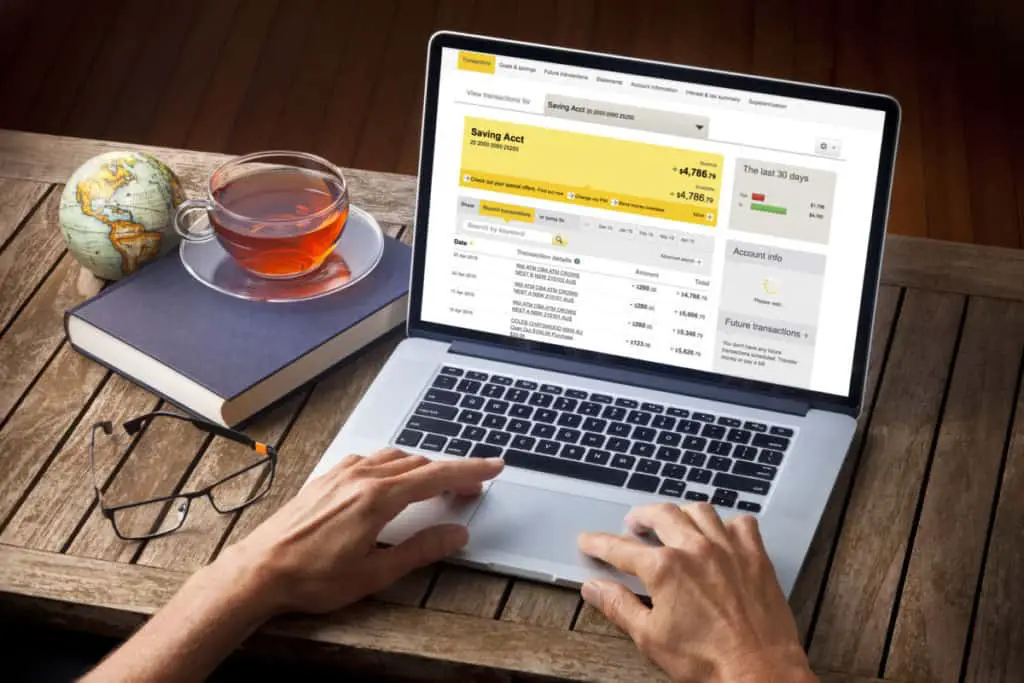
Table of Contents
Owners Recommend: Use Your Own Savings
This is the number one recommendation I got, I might not totally agree, but this is what most of the respondents answered (~80%), and the main reason was this:
The lesson to be learned is never go into debt for a depreciating asset like a boat. Poll respondent #23
One of the better consequences of the COVID-19 pandemic is that the personal saving rate has increased significantly. At least amongst higher income groups.
So, if you’re one of those people who have stashed away more of your money, those savings could be an excellent way to finance your catamaran. But be cautious: you don’t want to sink all your cash savings into this. You should ensure you’ll have more than enough for contingencies, especially in uncertain times. How much you should keep in cash savings will vary according to your circumstances and who you ask .
If you want to understand the costs of the liveaboard lifestyle, I suggest that you read this article where I summarize the costs of living aboard a cat.
In general, aiming to keep around twelve months’ living expenses is sensible if you’re planning on using savings to fund a luxury purchase. That should give you enough leeway if you hit an unexpected financial storm and need to batten down the hatches.
Saving our butts off to be able to buy it and not use a loan Respondent #56 and her very straight forwards explanation
If you can do that and still have a lot of excess cash in a savings account, using it to finance your catamaran may make sense. That’s because interest rates are so low at the moment, so your savings may not be keeping pace with inflation . Even though borrowing rates are also low, you’ll still pay more to borrow than you’ll earn on your savings. So, if you look at the lost interest as the cost of using your savings, it works out much cheaper than a loan. Or in other words:
I paid cash. If financing is an absolute necessity to buy your boat, you need to reconsider if you can really afford it. Poll respondent #36

Use the Equity in Your Home
If your home is mortgage-free or you have enough equity, financing your catamaran with a home equity loan can be a relatively cheap option.
Some respondents considered this option but non actually did go through with it, the main reason seemed to be that instead of owning a house and boat, they sold the house and used the money to buy a boat. Gabo
Of course, it means your home is collateral for the loan, so you risk losing your home if you fail to make the loan repayments.
However, because your home is security for the loan, you should get a lower interest rate than you’d get on an unsecured loan. Though you may have to shop around to get the best rates.
With this option, you’ll benefit from loan terms that are longer than what is usually given for unsecured loans; you may be able to choose anything from 5 to 30 years, depending on the lender. The term length helps to keep the monthly repayments down.
You should be aware that home equity lenders usually restrict the amount you can borrow. The limit is often to a maximum of 85% of your property’s value. That shouldn’t be a problem if you don’t have an existing mortgage. But if you do, your existing mortgage will reduce the amount you can borrow, and you’ll need to check how much you can borrow to ensure it’s enough to cover the cost of your catamaran.
Also, bear in mind that many home equity loans come with fees payable on closing. There may be other fees to take into account as well, like appraisal costs.
Still, shop around, and you can find home equity loans with no closing fees at both national and regional banks . It pays to do your research.

Unsecured Bank Loan
If you don’t have enough home equity or are uninterested in securing a catamaran loan against your home, another way to get your dream of catamaran ownership afloat is to go for an unsecured bank loan.
One important thing to consider when deciding if an unsecured loan is the amount you can borrow. Many unsecured loans max out at around $50,000, though $100,000 is available from some lenders.
Another factor to bear in mind is most unsecured loans have a maximum term of five to seven years. So, if you’re borrowing a large sum, this option can prove more costly than a secured loan.
On the plus side, like a home equity loan, unsecured loans have fixed repayments, and you know what your monthly commitment will be from the start.
Another advantage is that you’re not using your home as collateral, so it’s not at risk if you fail to meet the repayments. Of course, you could end up with a poor credit rating if you miss repayments; thus it’s still crucial to make certain you can afford the monthly commitment.
If you go down the unsecured loan route, check your lender’s small print for hidden fees. Some lenders charge origination fees, which can add to the overall cost of the loan.
It’s also often helpful to have the option to prepay if you want. Yet know that some lenders charge prepayment fees that can effectively tie you into a loan and prevent you from refinancing it should you find a cheaper option. Again, just check the small print before signing on the dotted line.
An alternative to a standard bank loan to finance your catamaran is a boat loan. These are available from specialist boat lenders and other lenders.
How Does a Boat Loan Differ From a Bank Loan?
With boat loans, you can often use the boat you’re buying as collateral. That translates into potentially lower repayments because the lender has security for the loan in the shape of your boat.
Also, the loan terms are often longer than for standard bank loans, reducing the monthly repayment.
Many boat buyers prefer this type of secured loan over one secured on their home. That’s understandable since the consequences of losing your boat aren’t as dire as losing your home.
The option of a boat loan stirred up a somewhat emotional debate where there seemed to be two sides, one side saying it makes sense since you’ll be able to invest the cash you already have:
Line of credit. Pay interest only. Keep your money working for you. Respondent #87
And the other side presenting an interesting perspective:
I don’t think I could ever look at the horizon in my catamaran and fantasize about just keeping on going while flipping the bird to everything behind me with a bank loan on it. Kind of defeats the purpose for me. I would feel like I’m dragging my hook behind me! Respondent #78 discussing the emotional aspect of taking a loan
Back to the loans! Some specialist boat loans require a downpayment. Meaning you won’t be able to borrow the total cost of the boat. A down payment may range from between 10-20%, and by putting in more capital upfront, you get the benefit of lower repayments.
Be aware, some boat lenders may have conditions around the type and age of the boats they’ll finance. There may also be minimum and maximum loan amounts. With some loans, there may also be fees to pay. Always check the lending terms carefully.
Examples of Available Boat Loans
One lender in the boat loan market is Bank of the West , through its Essex Boat Loan arm. Here are the main points to note about its boat loans:
- Its minimum loan is $10,000, with a maximum of $500,000.
- Interest rates are higher for smaller loans.
- There are down payment requirements that vary depending on the loan amount.
- It prefers a credit score of at least 700.
- There are processing fees to pay.
If you want fee-free options, they are out there if you shop around. For example, look at Truist , previously SunTrust:
- It will lend on new or used boats of 30’ (9m) or more.
- The minimum loan is $100,000.
- The maximum term is twenty years if you have a 20% downpayment.
- They’re one of the lenders that will take your boat as collateral.
If you’re not looking to borrow as much as Truist’s minimum loan, its online lending arm, Lightstream , fills the gap:
- It offers boat loans of between $5,000 and $100,000.
- Its maximum loan term is forty-eight months.
- There’s no restriction on the type or age of boat you can buy.
- It doesn’t take your catamaran as collateral.
- However, your credit score needs to be good to excellent to qualify for a loan.
These are just some examples of the boat loans available. As you can see, lender’s terms can differ significantly, so shopping around is vital.

Dealer Loan
If you’re buying your boat through a dealer, it’s worth exploring what help they provide on the financing front.
They’ll have experience and knowledge of the boat loan market. Plus, the dealer does all the legwork. This saves you the time of researching available options yourself, making it a very convenient way to get finance for your catamaran. It can also be reassuring to have a hand to hold throughout the process.
Stock Portfolio Loan
If you’ve got a stock portfolio, you might be thinking about liquidating some or all of it to finance your catamaran–certainly a strategy worth looking into. However, if you have a substantial portfolio and want to keep it, consider using it as collateral for a loan. That means your portfolio is security for your loan. (Note: you need a substantial portfolio if you want to finance your catamaran using this type of secured borrowing.)
Some providers allow you to borrow up to 90% of the value of your holdings, but borrowing at such a high loan to value on this type of finance isn’t a good idea. That’s because if your portfolio value drops, you’ll have to reduce your borrowing to maintain the loan-to-value ratio below the provider’s maximum.
If you don’t reduce the borrowing, the provider could sell some of your holdings, which means you won’t necessarily get the best price. There may also be tax implications from the sale.
Indeed, this type of borrowing is not without risk, and it won’t be suitable for everyone.
If you decide to go for it, it’s sensible to limit borrowing to not more than 20% of your portfolio value. This should provide a comfortable buffer to protect against market fluctuations. But remember, even that’s not guaranteed.
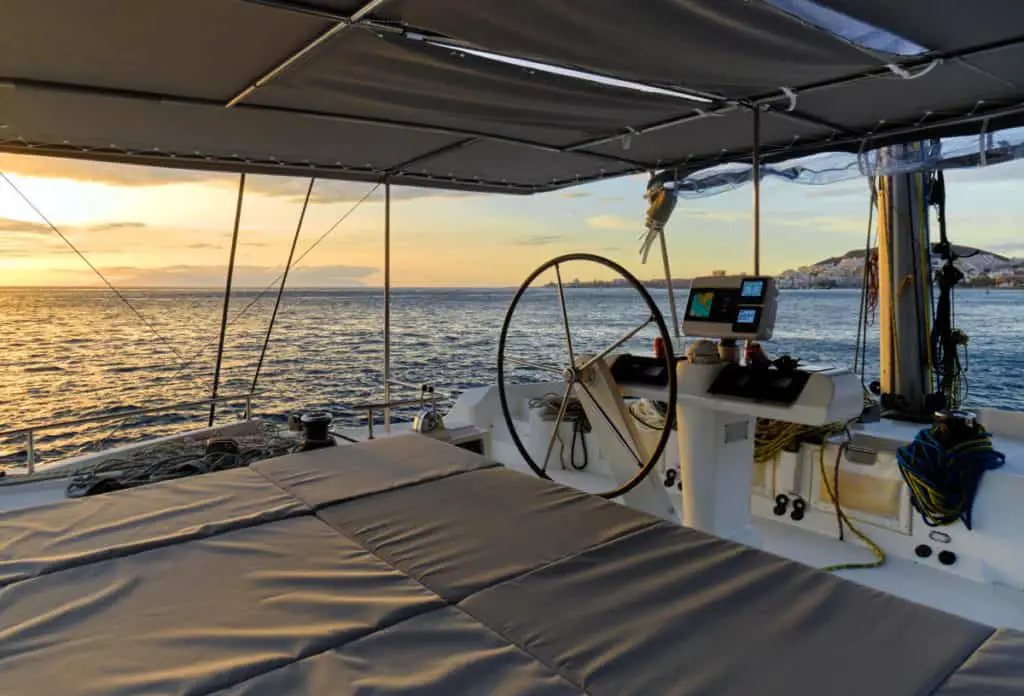
Rent Out Your Catamaran
Renting out your catamaran once you’ve bought it is another option you can use to help finance the purchase.
It pays for winter storage and summer dockage, a portion of the boat loan, maintenance. It gets me in the water more even [often]. Great for my taxes. Works for me Respondent #55
The idea is along the same lines as Airbnb. One site through which you can rent out your catamaran is Get My Boat . It allows a boat owner to list their catamaran for short-term rental in return for a fee.
There are a couple of ways to do this. The first is for you to captain the boat during the rental period. The second is to offer bareboat charters where you hand over your catamaran for the agreed rental period.
With the first option, you’ll need to have the time to captain your catamaran for the whole of each rental period.
If you don’t have that sort of time, the second option might suit you better. However, it does mean letting someone else take over your catamaran for the agreed period. So, you’ll want to ensure you have insurance to protect your investment.
Although renting out your catamaran means there’ll be times when it won’t be available for your own use, it’s up to you to accept or reject bookings. So you have some control over when you rent it out and the length of bookings you accept.
You’ll still need to maintain your catamaran and clean between rentals. If you do the cleaning yourself, that’s more of a time investment for you. But if you pay someone else to clean it, that’s an expense that will come out of your rental charges.
However, you can see how you can use this type of scheme to meet all or part of your monthly loan repayments. If you choose to finance your catamaran from your savings, it can provide a way to rebuild those depleted savings fairly quickly.
Whether you captain your catamaran or not, this option for financing your purchase will involve a good deal of your time.
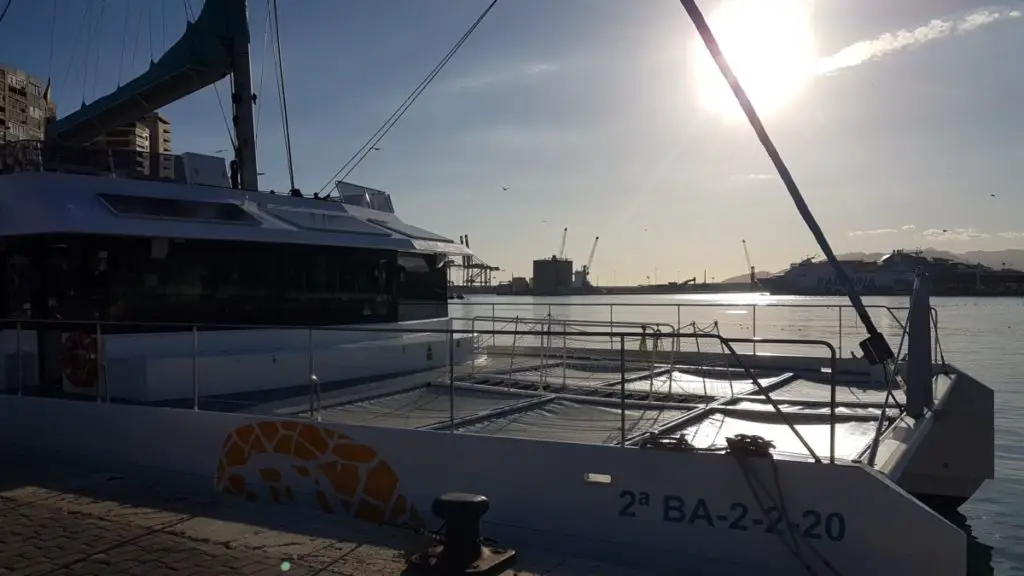
Use an Ownership and Management Program (Chartering)
Around 10% of the respondents said they have good experiences with chartering their cats as a way to stay within budget.
I charter with my boat. Makes the cost make sense Nathan (#86)
If you’re interested in financing your catamaran by renting it out but the time involved is off-putting, this option may be more suitable for you. The idea of an ownership and management program is that you buy your catamaran. Then you allow a company, like Navtours , to charter it out.
That company pays you a fee in return for the use of your boat. And they’re responsible for managing charters, marina fees, and maintenance costs.
The downside of this is that you lose some control over when your catamaran is available for your use. Though many companies should let you choose the type of management agreement you want.
For example, Navtours offers two options: One gives you access to your boat for twelve weeks of the year, the other requires you hand your catamaran over for a more limited time, allowing you to use it as you please for most of the year.
With both options, you can generate an income from your catamaran. That income will be lower under the second option because it’ll be out for charter less of the time.
As with renting, you need to be comfortable with other people using your catamaran. However, with a program like this, you’d be entering into a contract for five years. With the last option, it’s up to you how long you continue renting out your boat.
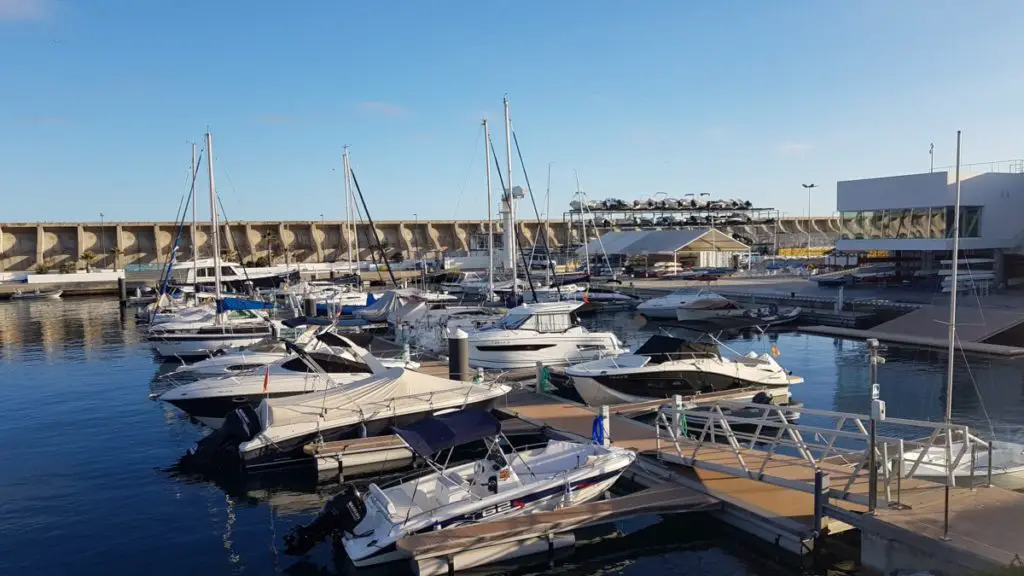
Things To Think About When Financing a Catamaran
However you choose to finance your catamaran, it’ll involve a significant outlay. Let’s discuss a couple of things you can do if you want to sail through the process smoothly.
What’s Your Intended Use?
If you choose to go with a boat loan, make sure that they allow you to do the things that you intend to do, some loans will have geographical limitations as to where you can go.
Some banks restrict your cruising grounds as they don’t want their collateral sailing away [for example] to Madagascar. Scott (#51)
Check Your Credit Score
As you’ve seen above, if you want a loan to finance your catamaran, you’ll need to meet lenders’ credit score requirements.
Knowing your credit score in advance is important because it helps you rule out some lenders that you know will turn you down, saving you time on unnecessary applications. Also, hard lender inquiries on your credit file might hurt your score.
While some lenders ask for at least a good credit score, others may be less stringent. That’s why you should shop around. An average or even poor credit score needn’t sink your dream of owning a catamaran . If your credit score isn’t quite up to scratch, think about ways to improve it. For example, you could pay down debt to reduce your borrowings or to reduce your credit utilization .
Get a Boat Survey
You’ll need a survey if you’re taking a loan secured on the boat. Though, regardless the way you decide to finance your catamaran, this will be money well spent. Even if you go the unsecured route or finance your catamaran from savings or a home equity loan, a survey will give you peace of mind.
Proceeding without a professional survey is risky. Remember, the catamaran of your dreams may look okay from the outside, but your untrained eye could miss potentially costly issues–a sure way to capsize your dream of owning a catamaran.
As you can see, if you’re looking at how to finance a catamaran, there are several options. Weigh them all up carefully and don’t go full steam ahead into anything. Take your time to steer a steady course through the available options to find one that suits you.
Remember, don’t use savings if it’ll leave you short of cash to deal with life’s headwinds. If you’re borrowing, shop around for the best rates and terms. In particular, give a wide berth to loans that tie you in with penalties for early repayment. Good luck and happy sailing!
And remember BOAT actually means Break Out Another Thousand! 😉
So what does it cost to maintain a catamaran?
- St Louis Fed: Personal Saving Rate
- Smart Asset: What is the Average Interest Rate for Savings Accounts?
- ING: US Inflation: The Only Way is Up!
- Santander Bank: What is a Home Equity Loan?
- Bank Rate: Best Home Equity Loan Loan Rates for April 2021
- US Bank: Home Equity FAQ
- Regions: A Quick Guide to Your Regions Home Equity Loan
- Bank Rate: Best Personal Loan Rates for April 2021
- Discover: A Quick Primer on Personal Loan Agreements, Terms, and Prepayment Penalties
- Bank of the West: The Essex Boat Loan Advantage
- Essex Credit: Boat Loan Rates
- Essex Credit: Boat FAQ
- Sun Trust: Marine Boat Loans
- Experian: What is a Good Credit Score?
- Youtube: Financing a Boat and What Works Best
- Wells Fargo Advisors: Securities-Based Borrowing
- Get My Boat: Boating Experiences Worldwide
- Boat Bookings: Bareboat Yacht Charter
- Boat Charter Insurance: Are You Looking for Marine Insurance That Protects You For Personal and Charter Use?
- Nav Tours: Yacht Ownership
- Experian: How to Improve Your Credit Score
- Experian: What is a Credit Utilization Rate?
Owner of CatamaranFreedom.com. A minimalist that has lived in a caravan in Sweden, 35ft Monohull in the Bahamas, and right now in his self-built Van. He just started the next adventure, to circumnavigate the world on a Catamaran!
Leave a Reply Cancel reply
Your email address will not be published. Required fields are marked *
Save my name and email in this browser for the next time I comment.
Recent Posts
Must-Have Boat Gear for Catamaran Sailors!
Sailing is probably the most gear-intensive activity I've ever done; there are so many decisions to be made about what gear to buy now, for tomorrow, and what to definitely never buy. The gear on...
6 Best Trailerable Trimarans For Bluewater and Coastal Sailing
Having a boat costs a lot of money, even when you are not using it, marina fees, etc. And once it is in the water most sailors never go very far from their "home marina" and sailing will be somewhat...


Catamaran financing
Have you found the boat of your dreams and are now looking for the best way to finance it? At Nautitech, we know that buying a catamaran is a big investment. For those who are about to become an owner, the question of how to finance your purchase is not to be taken lightly. Trust Nautitech's team of experts! We are detailing financing options for purchasing a catamaran. Acquiring a boat, via a bank loan or through a lease-purchase... Each solution has its pros and cons and will be suited, or not, to your project.
The purchase of a catamaran in cash
When the buyer has the necessary funds and is able to invest them directly in the project, the purchase of a catamaran in cash is a first possibility. While this method offers advantages, such as the quick purchase process, there are also disadvantages, such as mobilizing a large part of the buyer's finances in a single, relatively substantial financial project. If you want to buy your catamaran with cash, contact our team now! We will be happy to assist you and help you enjoy your new boat very soon.
Purchase a catamaran via Loan Financing
When the future buyer does not have the funds available, or if he wishes to preserve liquidity to be able to carry out other projects at the same time, he may take out a loan. This is the traditional method of financing to purchase a boat. It’s also fast and the method that boaters very often use! Like any other bank loan, or personal loan, the characteristics depend on the applicant's situation and the amount of his contribution. The repayment period for a catamaran loan ranges from 10 to 25 years, also depending on the possibilities of the future boat owner.
If you are interested in this financing method the acquisition of your multihull and would like to submit a loan application, the Nautitech team will be happy to put you in touch with financing professionals. Among them, La Victoire Finance is a trusted organization for the American market. LIZmer offers a credit solution for the French market.
The LOA solution (Lease-Purchase Option), A tailor-made solution for catamarans
To finance a catamaran, there is also the option of leasing, called the Lease-Purchase Option, or Equipment Leasing when the contract holder is a company. With a lease, the buyer chooses a financing solution for his catamaran that allows him to preserve his cash flow: the catamaran chosen is purchased through a third party – a bank, which leases the boat to him for a longer or shorter period. The lease term is defined, in advance, according to the buyer's financing possibilities. Once this term expires, the buyer proceeds with acquisition of the catamaran to become its effective owner, thanks to the purchase option.
Jean-Marie Naudin, LIZmer business representative – a brand of Capitole Finance-Tofinso – explain: "At LIZmer, we offer long-term support, thanks to a tailor-made offer. Every project is unique and we always propose the most suitable solution for our customers. For example, a client planning an extensive journey by sailing outside the Community's territorial waters may, under certain conditions, benefit from a complete VAT exemption on their lease payments within the framework of a leasing contract for financing a catamaran". LIZmer, which is specialized in boat financing for more than fifteen years now, has a stand every year at all major French boat shows.
Among the advantages of a lease-purchase of a catamaran, there is the possibility of having several lessees, of adjusting the contract along the way – for early repayment, for modification of the conditions of direct debit – as well as transferability of the contract. This is good to know in case a buyer might wish to resell the boat being financed.
Catamaran leasing contracts can also be adjusted, which means that the buyer can choose to add certain items to his multihull financing contract, such as electronic equipment, sails or on-board instruments. Finally, since the bank owns the catamaran until the end of the rental period, the boat is not part of the assets of the future buyer before this date. An advantage to be taken into account from a tax perspective !
Are you thinking of buying a catamaran under a leasing arrangement ? There are many organizations that can assist you with financing a catamaran under a lease-purchase agreement. Most even offer free simulations. Among them, LIZmer and CGI Finance are highly recommended. Trust us with your project, our team can help you !
Reasoning for a Navigation Program and Project Duration
To finance a catamaran purchase, there is no one-size-fits-all answer. Your pontoon neighbor’s solution may not be the best fit for your specific situation. Each project is unique and should be examined with great attention. There are certain questions to ask yourself. Would you like to sail for a few weeks a year, close to your home, or do you want to leave tomorrow, sailing around the world for an indefinite period? Do you expect to still be sailing in 5, 10, 15 or 20 years? If you have trouble defining your long-term plans, our specialist team can also help you. Let's develop your navigation plan together and select the financing method that suits you best! Whatever the solution considered for purchasing your catamaran, know that Nautitech is available to assist you. We will be happy to guide you to the ideal financing partner, to make your planned purchase a reality.
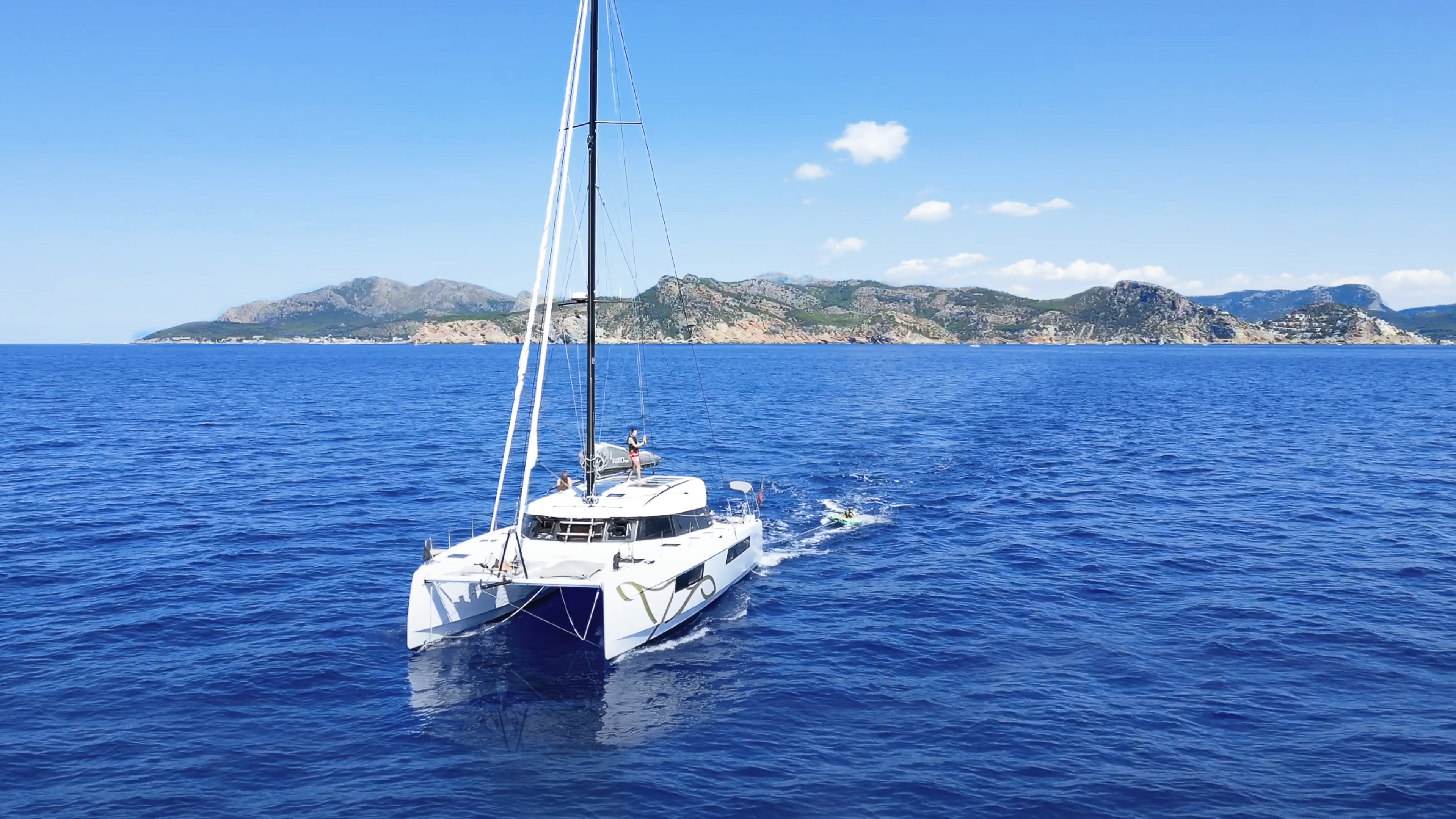
You would like to be supported in your project

Service Locator
- Angler Endorsement
- Boat Towing Coverage
- Mechanical Breakdown
- Insurance Requirements in Mexico
- Agreed Hull Value
- Actual Cash Value
- Liability Only
- Insurance Payment Options
- Claims Information
- Towing Service Agreement
- Membership Plans
- Boat Show Tickets
- BoatUS Boats For Sale
- Membership Payment Options
- Consumer Affairs
- Boat Documentation Requirements
- Installation Instructions
- Shipping & Handling Information
- Contact Boat Lettering
- End User Agreement
Frequently Asked Questions
- Vessel Documentation
- BoatUS Foundation
- Government Affairs
- Powercruisers
- Buying & Selling Advice
- Maintenance
- Tow Vehicles
- Make & Create
- Makeovers & Refitting
- Accessories
- Electronics
- Skills, Tips, Tools
- Spring Preparation
- Winterization
- Boaters’ Rights
- Environment & Clean Water
- Boat Safety
- Navigational Hazards
- Personal Safety
- Batteries & Onboard Power
- Motors, Engines, Propulsion
- Best Day on the Water
- Books & Movies
- Communication & Etiquette
- Contests & Sweepstakes
- Colleges & Tech Schools
- Food, Drink, Entertainment
- New To Boating
- Travel & Destinations
- Watersports
- Anchors & Anchoring
- Boat Handling
- ← Products & Services

Finance your dream boat
Here’s what you need to know.
Working with leading marine lenders, our partners are able to offer competitive rates and terms to help you purchase a new boat or refinance your existing boat loan. We offer loans for powerboats, sailboats, multi-hull boats, pontoons, and even personal watercrafts.
Use our Boat Loan Calculator to determine a monthly payment that’s right for you, then fill out an Online Loan Application for our lending partner to underwrite.
- If you are applying for a loan for $25,000 or greater, click here to apply online .
Once your application is completed, a representative will evaluate the application to determine the next steps, in an effort to make the closing process as seamless as possible.
Calculate Payments with Our Boat Loans Calculator
Use our boat payment calculator to determine a monthly payment that you can afford when looking to finance a new or used boat.
Simply enter your desired amount, estimated interest rate, and the loan term over which you intend to pay back the loan. Once you've input the information, the calculator will generate your estimated monthly payment on your boat loan. Take this number and plug it into your current monthly budget.
Boat Loan Calculator
Monthly Payment
Total Loan Amount
Your Monthly Payment is:
Your Max Loan Amount is:
Helpful Terms and Phrases
Monthly Payment What you're paying out of pocket every month to repay your loan.
Number of Years How many years you're looking to pay back the loan (term of loan).
Interest Rate Interest rate accompanying this type loan.
Total Purchase Price This is the total cost of your boat purchase. Don't include sales tax in this amount.
Down Payment This is the total out-of-pocket amount you are paying toward your purchase. Standard down payment is 15% but depending on your boat age, loan amount, and loan term the required down payment can be between 10% - 30%.
Deposit This is the total amount you have already paid toward your down payment.
Trade Allowance The total amount that you are given for any vessel that you trade-in as part of this purchase.
Amount Owed On Trade Total loan balance outstanding on the trade-in.
To get started, you will need to complete the Online Loan Application. Our lending partner will do an initial review and credit inquiry and likely will request additional financial information such as tax returns or bank statements to help them make a decision. Once approved, the lender will list any additional items needed prior to closing (for example, a marine survey and executed sales contract). Next, our lending partner will collect information from the seller(s) to finalize the loan closing paperwork. Once readied, our lending partner will send closing documents to the buyer(s) and the seller(s) for completion. Lastly, our lending partner would send the loan proceeds to the seller(s) in accordance with the funding instructions.
Boat loans share some similarities with both vehicle and home mortgage financing. You will need to complete a loan application for our lending partner to underwrite. Similar to a home mortgage, the bank can ask for your personal federal tax returns, proof of assets, and may ask for additional financial information depending on each situation.
Similar to a vehicle loan, the lender has a loan‐to‐value guideline that is based on the book value for used boats and the contract price for new boats. All of the lender's underwriting criteria must be met to offer approval, and these guidelines tend to be more rigorous than vehicle financing. If approved, the lender would outline any additional items needed prior to closing and closing paperwork would be prepared once all of the necessary information has been collected.
You will need to provide basic demographic and employment information, complete a personal financial statement that lists all your assets and liabilities, and provide us with information on the boat you are interested in buying or refinancing. As part of the underwriting process, our lender will likely ask for tax returns and bank statements for non-retirement and retirement assets to verify your income and net worth, a copy of the sales contract, and a marine survey report (on most used boats). At the end of the application, you can securely upload these documents to help speed up the review of your application.
Most applicants can expect to have a decision on their application in 2-4 business days. Our lenders will often ask for financial information before making a decision.
Typically, our lenders will require a boat to be documented with the United States Coast Guard if it meets the Coast Guard's net tonnage standard. If the boat you wish to purchase is eligible to be documented, our finance department or lender will prepare a First Preferred Ship Mortgage as part of the loan closing paperwork and file it with the Coast Guard as the instrument that secures the bank's lien on the vessel. If the boat is not large enough to be documented with the Coast Guard, a formal mortgage would not be prepared; however, the lender would still record its lien against a state title or equivalent document. In either event, the lien would be released once the loan has been repaid.
Our lenders do not issue pre-approvals that are similar to what you get when purchasing a house. You are able to apply without having a sales contract on a boat, and you aren't locked into buying the boat that you apply with, but you do need to list a boat on the application.
The rates and terms are highly dependent on the boat, so we recommend applying with a boat that is similar in age, length, and type to the one you are interested in purchasing, and use a realistic purchase price.
Credit requirements vary by lender, but our lenders generally require applicants to have a credit score above 680 with no major credit issues such as a bankruptcy, foreclosure, settlement or charge-off within the past 3 – 5 years.
Generally, marine financing is subject to higher credit and other underwriting standards than that for vehicles or even home mortgages. Our lenders look for applicants with better credit, but there are other companies that will consider individuals with past credit issues.
Our lender will first review your credit score and history to determine if you meet their credit guidelines then review your financial information. When evaluating your application, our lender will look to see that you currently have the funds to make the down payment without depleting your assets, and verify your net worth and debt-to-income ratio (monthly debt payments divided by monthly income) meets their guidelines. They will also review the boat to ensure the purchase price is in line with the market value of the boat by using third-party valuation guides like NADA, BUC and ABOS.
The loan term available will largely depend on the boat you select. We work with banks that can offer terms up to 20 years, subject to the age and type of boat, as well as the loan amount available from the lender.
Once the lender collects all the required information from the buyer and seller, both parties will receive paperwork that they need to sign and notarize. Once the lender receives the paperwork back from both parties, they will disburse funds in 1-2 business days. The buyer and seller do not need to visit a bank or be in the same place to close the loan. If the boat is currently financed, our lender will disburse the funds directly to the lienholder to pay off the loan, otherwise, the funds will be paid to the seller by check or wire transfer.
BoatUS partners with leading marine lenders that consider various types of collateral, including larger, more expensive vessels. Some restrictions do apply — for example, we cannot accept applications for steel‐hull boats at this time.
Use our Online Loan Calculator to determine your monthly payment or enter the desired monthly payment to see the loan amount. to determine your monthly payment or enter the desired monthly payment to see the loan amount.
We recommend you access the NADA Guides Boat Value Online Tool , powered by J.D. Power.
- Loan amounts from $10,000 for boats model year 1998 and newer
- Multi Hull Boats
- Pontoon Boats
We use cookies to enhance your visit to our website and to improve your experience. By continuing to use our website, you’re agreeing to our cookie policy.
- Credit cards
- View all credit cards
- Banking guide
- Loans guide
- Insurance guide
- Personal finance
- View all personal finance
- Small business
- Small business guide
- View all taxes
Best Boat Loans in 2023: Finance Your Boat
Boat loans can be unsecured or secured by the boat. Compare financing options from online lenders, banks and credit unions.

Many or all of the products featured here are from our partners who compensate us. This may influence which products we write about and where and how the product appears on a page. However, this does not influence our evaluations. Our opinions are our own. Here is a list of our partners and here's how we make money .
Setting sail on your own boat is a priceless experience. But unless you’ve saved a lot of cash, you’ll need a boat loan to make your dreams a reality.
Here are lenders that offer boat loans, plus information on how to finance a boat with a personal loan — including unsecured and secured loan options. Learn where to find boat loans and factors to consider before applying.
- 20+ years of combined experience covering personal loans and financial topics.
- Objective, comprehensive star rating system assessing 20+ categories and 70+ data points.
- Governed by NerdWallet's strict guidelines for editorial integrity .
- 35+ personal loans reviewed and rated by our team of experts.
Our pick for
Unsecured boat loans
Sofi personal loan.
8.99-29.99%
$5,000-$100,000
LightStream
6.99-25.49%
Achieve Personal Loans
8.99-35.99%
$5,000-$50,000
8.49-35.99%
$1,000-$50,000
7.80-35.99%
Laurel Road Personal Loan
9.49-24.25%
$5,000-$45,000
Rocket Loans
9.12-29.99%
$2,000-$45,000
How do boat loans work?
A boat loan is an installment loan with fixed monthly payments typically over two to 20 years. You can get a boat loan from a bank, credit union or online lender.
Interest rates and loan terms vary based on the lender, the size of the loan, your credit score and income, and whether the loan is secured by the boat or unsecured.
Applying for an unsecured boat loan is typically fast, and some loans can be funded the same or next day after you’re approved. Lenders usually deposit the funds into your bank account, from which you can withdraw the money to purchase a boat.
Secured boat loans vs. unsecured boat loans
Boat loans can be secured by the boat or unsecured and backed by your signature. Here are basic differences.
Secured boat loans
Secured boat loans use the purchased boat as collateral. They may have higher loan amounts, longer repayment terms and lower rates than unsecured loans. The risk is that you can lose your boat if you default.
With a secured boat loan, you may also need to make a down payment, which means you’ll need cash upfront.
Secured loans work best for borrowers who don’t qualify for an unsecured loan, want a higher loan amount and are comfortable with the risk associated with secured loans.
An unsecured boat loan doesn’t use the boat or anything tangible as collateral. Without that backing, rates on unsecured loans may be higher and terms shorter.
Approval for an unsecured boat loan is based on factors like your credit score, income and existing debt.
If you default on an unsecured loan , you may not lose the boat, but you’ll still face consequences, including a damaged credit score and wage garnishment if the lender takes you to court.
Pros and cons of secured and unsecured boat loans
How long are boat loans.
Repayment periods for boat loans vary depending on the type of loan you choose.
Unsecured personal loans typically have shorter repayment periods — two to seven years. If you choose a secured boat loan, your term can be as long as 20 years.
Keep in mind the term you choose affects the interest you pay. Shorter terms have higher monthly payments but carry less interest.
For example, a four-year, $30,000 boat loan with an annual percentage rate of 15% will have monthly payments of $835 and cost $10,076 in interest. The same loan with an eight-year repayment term will have monthly payments of $538 and cost $21,683 in interest.
Use NerdWallet’s boat loan calculator to calculate your boat payments.
What is the average interest rate on a boat loan?
Boat loan interest rates vary by lender. An unsecured boat loan will have an annual percentage rate ranging from 6% to 36%. See the table below for average unsecured interest rates based on your credit bracket.
Secured loans may have lower APRs, with many lenders offering single-digit rates. If you're not sure what credit bracket you fall into, check your credit score for free on NerdWallet .
Where to get a boat loan
In addition to getting a boat loan from an online lender, you can also get a secured boat loan from a bank, credit union or marine lending specialist. Here are some examples.
Secured boat loans from banks
You’re more likely to find secured loans from banks. Banks may offer perks to existing customers, like discounts and favorable loan terms. If your bank offers boat loans, it’s a good place to start.
Secured boat loans from credit unions
Credit unions can offer low-rate secured boat loans to their members. These not-for-profit lenders may look past a low credit score or rocky credit history on a loan application and consider a borrower’s whole financial picture, including the relationship with the credit union.
Your local credit union is a good first stop, though national credit unions also offer boat loans. Navy Federal and First Tech , for example, both offer boat loans with 15-year repayment terms with rates starting below 10%.
Loans from marine lending specialists
Marine lending specialists are financial service companies that act as brokers to find you a boat loan. They secure funding through outside sources such as banks.
Boat loans from marine lenders may have similar rates and repayment terms to personal loans. One advantage might be the ability to work with a specialist who understands the boating business, according to the National Marine Lenders Association.
These loans must be secured by the boat and require down payments from 10% to 20% of the purchase price.
How to get a boat loan
To get boat financing directly from a lender, you’ll need to apply for a loan . Most loan applications are online and require you to submit personal information like your name, address, contact information and Social Security number. You may also need to submit proof of identity, employment and income.
If you’re applying for a secured loan, you’ll want to have information about the boat on hand, including the builder or manufacturer, model, model year and purchase price.
Once you submit your application, you’ll wait for an approval decision. If you’re approved, you may need to visit the bank or credit union to close the loan and receive funds. Unsecured personal loans, especially from an online lender, can typically be closed online and funded the same or next business day.
Can I get a boat loan with bad credit?
Borrowers with bad credit may still qualify for a boat loan. Some online lenders offer unsecured personal loans specifically to borrowers with bad credit.
Secured loans from a bank or credit union may also be a smart option for borrowers with bad credit since approval decisions rely less on their credit.
» COMPARE: Best unsecured loans for bad credit
Alternatives to boat loans
Financial experts don't recommend personal loans for discretionary purposes, particularly if you already carry credit card or other debt. If you can’t afford to buy a boat today, or you’re not quite ready to make the commitment, here are some alternatives.
Save up for the purchase. Consider holding off and starting a savings plan toward buying a boat. You may be able to negotiate a cheaper price by paying with cash, and you’ll avoid paying interest on a loan.
Join a boat club. For a one-time fee and ongoing monthly or annual dues, boat clubs provide access to a fleet of boats for their members and guests.
Consider peer-to-peer rentals. Similar to renting a house on Airbnb, you can temporarily rent a boat through a peer-to-peer rental marketplace, such as Boatsetter or GetMyBoat.
Last updated on April 19, 2022
NerdWallet's Best Boat Loans in 2023: Finance Your Boat
- SoFi Personal Loan : Best for Unsecured boat loans
- LightStream : Best for Unsecured boat loans
- Achieve Personal Loans : Best for Unsecured boat loans
- Upgrade : Best for Unsecured boat loans
- Upstart : Best for Unsecured boat loans
- Laurel Road Personal Loan : Best for Unsecured boat loans
- Rocket Loans : Best for Unsecured boat loans
Frequently asked questions
Boat loan repayment terms are usually between two and 20 years. Unsecured boat loans have shorter repayment terms — about two to seven years — while secured boat loans have longer terms. Calculate your boat loan payments to see how the term affects your monthly payments and overall interest.
You can find secured boat loans for used boats at U.S. Bank and Bank of the West, among others. With a secured loan, a lender may consider the boat's age and how much it has been driven when deciding your rate and loan term. With an unsecured loan , that information doesn't usually factor into your rate and term.
Most lenders want to see a good credit score of 690 FICO or higher on a boat loan. You may qualify for a secured or unsecured boat loan with a lower credit score, but borrowers with fair or bad scores (below 690 FICO) are likely to receive higher annual percentage rates.

Liveaboard Sailboat Budget: A Complete Guide

Last Updated by
Daniel Wade
June 15, 2022
Living aboard a sailboat can be a cost-effective lifestyle, but only if you budget smart, predict expenses, and plan ahead.
In this article, we'll go over the basics of budgeting and what to consider when planning your finances as a liveaboard. We'll also cover the most common expenses that are unique to sailboats, along with how to save money and budget accordingly.
As a liveaboard, you'll need to budget for slip fees, fuel, maintenance, utilities, repairs, and supplies. You'll also need to factor in registration fees and mandatory safety equipment that has a limited service life.
We sourced the information for this article from marinas, maintenance records, and from our experience with sailors who live aboard their boats. Other information was sourced from financial experts experienced in budgeting.
Table of contents
Budgeting Basics
Budgeting is one of the simplest and most important aspects of money management. They don't teach it in schools, but it can be the difference between living well and falling behind. This is especially true on a sailboat because a well-budgeted liveaboard can enjoy a level of financial independence unrivaled by traditional housing.
Before we dive into the specifics of budgeting on a sailboat, we will cover some of the basic rules of managing money. This will make it easier to manage your finances in the unique liveaboard environment.
Managing Income, Savings, and Expenses
One of the most important rules of budgeting is to be aware of what's going on in your personal finances. You need to figure out how much money you're making, how much money you have, and how much money you're spending.
One way to get a handle on your finances is to audit your bank statements. Figure out how much you're taking home, when your bills are due, how much they cost, and what you have leftover. This includes things such as credit card bills, loan payments, utility expenses, rent, and other recurring expenses.
Once you have a handle on your finances, keep track of them regularly and look for ways to save. This is how you can safely determine how much you can afford to spend.
Emergency Fund
Everyone, especially liveaboards, should have an emergency fund if they can afford it. An emergency fund is a chunk of change that you don't touch unless you absolutely need to. For most people, $10,000 is the ideal emergency fund balance. It can cover everything from emergency medical bills to job loss, and it can also cover expensive sailboat repairs.
Budgeting on a Sailboat
Many people choose the liveaboard lifestyle because they believe it saves money. That's said, poor financial management can make living aboard cost more than living in an apartment or house. Proper budgeting and regular upkeep are essential to keep your liveaboard lifestyle affordable and comfortable.
Budgeting on a sailboat follows the same basic principles as any other kind of budgeting. However, the specifics are different, as a sailboat is a floating vehicle that has unique maintenance and living requirements.
Boat Payments
Many people make payments on their boats. Financing a liveaboard sailboat is common practice, and you should budget these payments the same way you'd budget a car payment or even the mortgage. Be sure to factor in boat payments when making your budget, as it should be a top priority when cash is tight.
Boat Insurance, while not mandatory in most places, can actually make your budget more secure despite the recurring expense. Sailboat insurance is generally inexpensive and rarely costs more than a few hundred dollars per year.
It provides peace of mind and protection from accidents that can easily cost thousands. Part of budgeting is preparing for unexpected costs, and boat insurance can eliminate one of the largest emergency boat expenses.
Cruising vs. Permanent Mooring
How do you plan on using your sailboat? A moored sailboat has vastly different requirements than a cruising sailboat. Cruising, whether short or far, requires several additional resources that you'll need to budget for. Remember, these requirements are in addition to regular maintenance, which will cover later in this article.
Up-to-date navigational equipment is essential if you plan to cruise on your sailboat. In the 21st century, people rely primarily on digital navigation systems when setting sail. The old tools and methods are important but less expensive to acquire, so we'll focus on Modern systems.
The most basic modern GPS chart systems cost between $250 and $1,000. These systems become obsolete somewhat quickly, so you should plan to update them once every five or ten years. More advanced navigation instruments, such as radar, last longer but cost significantly more. If you intend to use radar, plan to spend between $1,500 and $3,000 for the system and occasional maintenance.
Another consideration for cruising sailboats is rigging. In this case, we'll also include items such as sails, furling systems, winches, and other working hardware that's necessary for sailing.
Plan for regular maintenance and occasional replacement, as the consequences of rigging failure can be catastrophic. Be sure to budget for replacement canvas, tools, stays, lines, and other items that need attention before (or after) getting underway.
Dockside Liveaboard Budgeting
If you plan on spending most of your time at the dock, you don't have to worry as much about rigging and operational expenses. Instead, your expenses will likely resemble those of living in an apartment or a house.
Docking Fees
Docking fees, or slip fees, are the expenses paid to dock your boat at a marina or yacht club. Docking fees vary widely between states, cities, and establishments. Usually, docking and slip fees are calculated by an overall boat length. Additional expenses may apply to unusually wide boats, such as catamarans and trimarans.
You should budget slip fees the same way you budget a rent payment or a mortgage. Similarly, if you fail to pay your dock or slip fees, your vessel could be evicted from its mooring. Slip fees should be a top priority on your liveaboard sailboat budget.
Utilities include everything from electricity to freshwater. These connections are available only on the dock, though sailboats can generate their own electricity using their engine, solar panels, wind turbines, and other sources. Liveaboards typically connect to shore power, water, and sewage, as it requires virtually no initial expense.
Budgeting for utilities is typically fairly easy for liveaboards. This is because shore connections are often included in the price of mooring. If they're not included, you can talk to the marina and get an idea of how much you'll spend.
Fuel expenses are also a factor for liveaboards, even if they rarely move the boat. This is because fuel includes both gasoline or diesel for the engine (which should always be operational) and also propane or kerosene for heating and cooking.
Some boat stoves and heaters use mineral spirits (alcohol), so that should also be considered. There are no hookups for cooking and heating fuel at marinas, so it must be hauled in manually.
If you live aboard in an area with cold weather, such as the Pacific Northwest or the Northeast, you should allocate a considerable amount of your budget to heating fuel. Additionally, consider converting your appliances to run on the same fuel. For example, if you have a kerosene stove, consider installing a kerosene heater as well. This can simplify the budgeting process as only one fuel type has to be acquired.
Maintenance
Apart from slip fees, maintenance is likely the largest expense you'll need to budget for. It is also incomparable to home maintenance, as very few of the same tasks apply. Regular maintenance is essential and will prevent costly repairs down the line.
Safety Equipment
The U.S. Coast Guard requires several pieces of safety equipment to be aboard your boat at all times, whether moored at a marina or out at sea. Many of these items have a limited service life and must be checked and replaced regularly. These items include fire extinguishers, life jackets, flares, among others.
Engines are the source of some of the highest maintenance expenses aboard a sailboat. This is especially true for inboard motors, which must be maintained in tight spaces. It's essential to keep your engine running well. Oil changes, cooling system inspections, repairs, and filter replacements must occur regularly.
The hull of a sailboat is a magnet for undesirable sea life, such as barnacles, muscles, and other growth. Though the hull itself is quite resilient, marine growth can weigh down the boat, immobilize the propeller, damage the rudder, and cause other issues, especially while underway. The hull must be scraped and painted periodically, which can be considerably expensive. This should be included in the budget once every year or two.
Additionally, oxidation occurs on fiberglass hulls which need to be addressed periodically. This process can be done about the waterline and does not always require hauling out. Refinishing kits are available, and you can do it yourself to reduce the cost.
The deck is another source of maintenance costs that are often overlooked. The cost time required to maintain your deck depends on what kind of deck you have. A teak deck, for example, can be maintained yourself, but it's more labor-intensive than a fiberglass deck. Be sure to factor in the cost of chemicals and tools when budgeting for deck maintenance.
Wiring typically doesn't require maintenance in the traditional sense, though it will need to be serviced periodically. Marine electrical systems required fuses, bulbs, and other items that deteriorate faster in a saltwater-rich environment than they do on land. Factor in a few hundred dollars per year for miscellaneous electrical parts.
Hauling Out
Hauling out is an essential part of hull maintenance that's costly enough to include as a separate category. Your vessel will need to be hauled out once every couple of years to scrape and paint the bottom, along with performing any repairs that can't be done in the water. Hauling out is an extensive process that can cost several thousand dollars, but it isn't required very often.
Chemicals are surprisingly expensive and must be budgeted accordingly. Items such as fiberglass and resin, which are essential aboard any sailboat, can cost upwards of $100 per gallon. Several gallons could be required to complete a repair job.
Other compounds, such as paint, spar varnish, and cleaning supplies, should also be factored in. In most cases, $1,000 per year or so should cover most chemical expenses. Storing chemicals properly helps preserve them and reduce costs over time.
Most liveaboards agree that you should have a few grand tucked away for repairs each year. Things break on a sailboat, and this is especially inconvenient if the vessel doubles as your home. We've already covered chemicals for fiberglass repair, so let's go over some of the other sources of surprise repair costs.
Pipes and Plumbing
Plumbing issues are common on sailboats. Leaky showerheads, clogged toilets, and tank issues happen occasionally and must be repaired. Luckily these issues are usually not particularly expensive or complex to fix.
Sailboats must furnish their own water pressure and include systems the pump out the bilge. Potable water pumps and bilge pumps are electric and have a limited service life, which means you'll need to replace them eventually.
Cabinets, doors, gimbals, and other interior furnishings break from time to time. Budget a few hundred dollars each year for wood, stain, hinges, screws, and other miscellaneous hardware to repair interior fixtures if they break.
Leaks occur on sailboats; it's just part of life. Leaks are also the most annoying problems to fix and can be very costly and urgent. It's best to factor in some of your savings to repair leaks in the hull and the deck. Don't ignore leaks around portlights and vents, as water ingress can cause mold and quietly weaken the fiberglass structure of your vessel.
Mechanical Systems
Mechanical and electromechanical systems such as the engine, blowers, and hydraulics sometimes fail and need repair. These systems are the most costly to repair on a sailboat. They can eat up a considerable amount of your maintenance budget in a short period of time. Regular inspection and maintenance are key to preventing unwelcome mechanical issues.
Experienced sailors often already have all the tools they need to maintain and repair their boat. But if you're new to the liveaboard lifestyle, you're going to need to equip yourself with all the required implements for maintaining your vessel.
Along with basic tools, such as screwdrivers, a power drill, and wrenches, you'll also need tools to work with fiberglass, wiring, and plumbing. Most of these tools are available for discounted prices at yard sales, pawnshops, and local marketplaces.
Transportation
Transportation is an important factor to consider when living aboard a sailboat. Some sailors choose to keep a car, especially if they continue to work a traditional job in a city. This poses unique challenges in that it adds car payments, insurance payments, and fuel to the equation. Additionally, some marinas don't allow parking for free.
Ride-sharing apps such as Uber and Lyft are an alternative, but this adds up quickly. Some sailors choose to take public transportation or ride a bicycle, which can reduce the long-term load on your budget.
Sample Liveaboard Budget
Now that we've covered the basic expenses to expect when living aboard, we'll put together a sample liveaboard budget. The figures are based on someone making a monthly income of $4,000 docking a 30-foot sailboat at a reasonably priced marina.
As you can see, a well-proportioned budget leaves plenty of wiggle room for personal expenses, saving, and stashing money away for larger unexpected expenses. These prices may not reflect your individual situation, but the point remains the same. A balanced budget can make living aboard a sailboat affordable and enjoyable.
Related Articles
I've personally had thousands of questions about sailing and sailboats over the years. As I learn and experience sailing, and the community, I share the answers that work and make sense to me, here on Life of Sailing.
by this author
Financial and Budgeting
Most Recent

What Does "Sailing By The Lee" Mean?
October 3, 2023

The Best Sailing Schools And Programs: Reviews & Ratings
September 26, 2023
Important Legal Info
Lifeofsailing.com is a participant in the Amazon Services LLC Associates Program, an affiliate advertising program designed to provide a means for sites to earn advertising fees by advertising and linking to Amazon. This site also participates in other affiliate programs and is compensated for referring traffic and business to these companies.
Similar Posts

Best Bluewater Sailboats Under $50K
December 28, 2023

How To Choose The Right Sailing Instructor
August 16, 2023

Cost To Dock A Sailboat
May 17, 2023
Popular Posts

Best Liveaboard Catamaran Sailboats

Can a Novice Sail Around the World?
Elizabeth O'Malley

4 Best Electric Outboard Motors

How Long Did It Take The Vikings To Sail To England?

10 Best Sailboat Brands (And Why)
December 20, 2023

7 Best Places To Liveaboard A Sailboat
Get the best sailing content.
Top Rated Posts
Lifeofsailing.com is a participant in the Amazon Services LLC Associates Program, an affiliate advertising program designed to provide a means for sites to earn advertising fees by advertising and linking to Amazon. This site also participates in other affiliate programs and is compensated for referring traffic and business to these companies. (866) 342-SAIL
© 2024 Life of Sailing Email: [email protected] Address: 11816 Inwood Rd #3024 Dallas, TX 75244 Disclaimer Privacy Policy
- 0 No item in your cart
- SUBSCRIPTION
- Classified Ads
- Technical Specifications
- Destinations
- Address book

- All the magazines
Financing your Catamaran or Trimaran

Article published on 22/06/2019
published in n°13 aug. / sept.

Buying a multihull is a major investment, and usually bigger for the same length vessel than for a monohull. Classic loan, lease-option deal, charter-management… What are the options? And what is the fiscal situation with each option?
Create a notification for "Technical"
We will keep you posted on new articles on this subject.
When we talk about two or three hulls, the price goes up, and often requires a loan. Given the low interest rates available at the moment (around 4-5%) taking on a loan to finance your project looks like an increasingly interesting option. In some cases, a loan can have an impact on the legal and fiscal status of your multihull. When buying a boat, whether as a private individual or as a company, the banks offer two possibilities: a loan or a lease-option deal. The loan needs to be secured by a maritime or property mortgage if the risk is high. You are the boat owner and the boat’s documents are in your name. This applies to new and second-hand boats. The length of the loan can be as long as 25 years, although the average is 10. In practice it’s possible to finance a 10-year-old boat over 15 years. The deposit is usually 20-30% and the depreciation schedule can evolve based upon your situation. For example, you can have smaller monthly payments throughout the year, and one big payment at the end to coincide with your dividends being paid out. Each bank has its own particularities, and advice from an independent broker, like Jérôme Wydauw of W.Lease, can be really useful when looking for an offer which suits your needs and constraints. There is also the question of insurance to be considered.
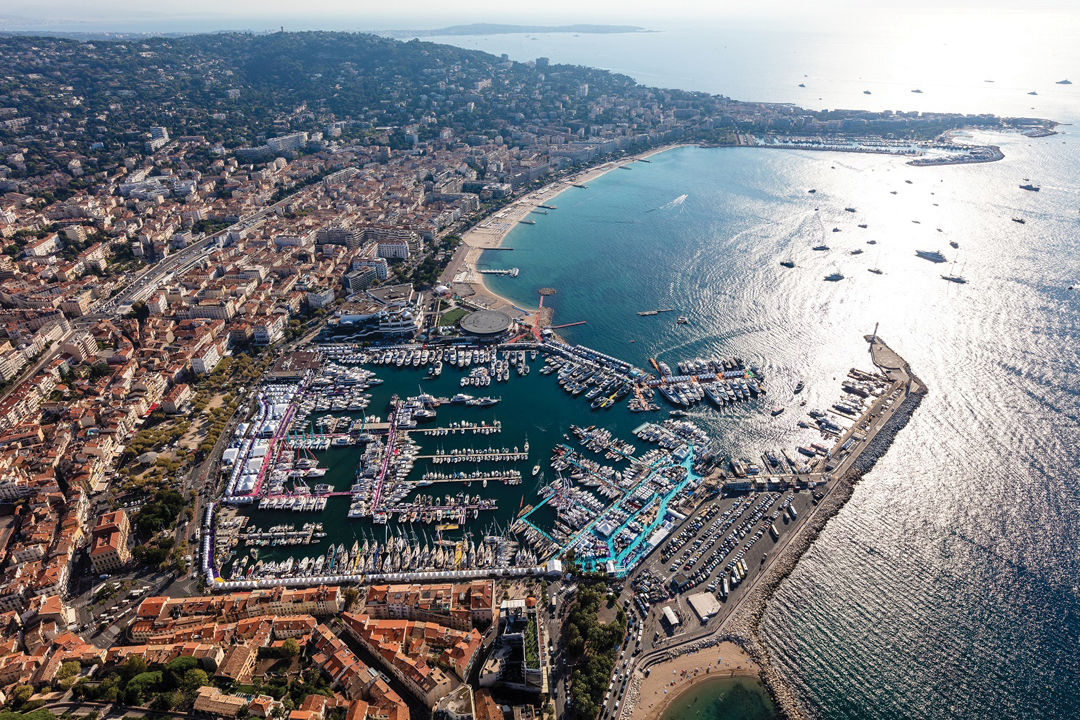
Leasing: Two Different Possibilities
The other type of loan is leasing. Leasing is only available for companies, and the Lease-Option deal is available to companies and private individuals. In this case, it is the bank or lender who buys the boat in their name and charters it to you over a fixed term which is decided at the outset (3 to 15 years maximum). You will then have the possibility to become the owner at the end of the period by paying off the purchase option, which is stipulated in the original contract, as a final charter payment. In some cases, the initial downpayment (1st charter payment) can be considered as the buyback amount. Watch out though. This format is not systematic with all leasing contracts. There are several advantages. The boat cannot be seized by any creditor other than the lender. It does not count as part of the charterers personal wealth and is not subject to a wealth tax in the countries where it applies. For a company, the rents are depreciable and the sales tax applies to everyone. For the period that the charterer is not the owner, he or she is still responsible for the boat, in particular if there is a law violation or an accident. In Europe, it is the lender who pays the sales tax, and they will then possibly pass this cost on to the renter through the rents, either partially or sometimes not at all. Two sales tax régimes are possible: a fixed amount or the real amount. Given that cruising boats are often outside territorial waters (+ 6 miles from the coast), the government offers a 50% reduction in the sales tax on the charter. The fixed rate is therefore 10% instead of 20% in France. Since 2006, the sales ...
Subscribe to Multihulls World and get exclusive benefits.
Did you like this article ?
Share this article
Most-read articles in the same category.

Who's Who - Nigel Irens: A wonderful, self-taught naval architect

A Wonderful Nautitech Gateway - An Owners’ Meet Up in Martinique

International Multihull Show - The unmissable get-together for multihull fans

The photographer's eye - Rivergate Marina, Brisbane, Australia: Customs Clearance!

2023 Sail Buyer's Guide - Multihulls from 30 to 40 feet

2023 Sail Buyer's Guide - Multihulls from 20 to 30 feet
What readers think.
Post a comment
No comments to show.
Follow us on
Vous avez ajouté " " à vos favoris., vous avez supprimé " " de vos favoris., in order to add this article to your favorites, please sign in..

- About Aeroyacht
- Aeroyacht Design
- Aeroyacht TV
- Mission Statement & Privacy Policy
- Aeroyacht Racing
- Favorite Links
- Customer Testimonials
- Office Location
- BUY A MULTIHULL
- Specifications
- Photo Gallery
- Try Before You Buy
- Yacht Ownership and Demo Sails
- BUY A POWER CATAMARAN
- Yacht Business Ownership FAQ
- MULTIHULLS FOR SALE
- Aeroyacht Superyacht Catamarans
- Global Multihull Search
- Buy A Multihull
- Sell a Multihull
- Multihull News
- Publications & Articles
- Commissioning & Delivery Services
- Catamaran Financing Calculator
contact Aeroyacht to discuss your Catamaran Financing
- Multihull Services
- Catamaran Surveys
- Catamaran Build Consultation
- Financing Services
- Catamaran Repair & Service Facilities
- Catamaran Demo Rides & Shows
- Catamarans for China
- Yacht Design
- Interior Styling & Yacht Art
- Photography
Catamaran News

The Stunning Interior Design of the McConaghy Multihull Range

Nautitech Spareparts – Order Simple and Quick

For Immediate Delivery – Nautitech 44 Owner Version

Yannick Bestaven’s NEEL 47 Trimaran

Conser 47/50′ FOR SALE
- Catamaran Steering Positions
- Catamarans vs. Monohulls
- Catamaran Learning Center
- Catamaran Speed
- Catamaran Efficiency
- Catamaran Stability
- Catamaran Safety
- Catamaran Shallow Draft
- Catamaran No Heel Sailing
- Catamarans and Seasickness
- Catamaran Space
- Catamaran Boat Handling
- Catamaran Advantages over Monohulls
- Wave-Piercing Bows
- Catamaran Sailing Schools
- Catamaran Insurance
- Catamaran Charter Business and Tax Savings
- Ask the Owner
- 5 Valuable Tips
- Survey Checklist
- Sea Trial Checklist
- MULTIHULLS & CATAMARANS App for Iphone
- Catamaran Repair & Service Facilities
- Catamaran Demo Rides & Shows
- Interior Styling & Yacht Art

Planet Sail tests a McConaghy Multihull

Charles Caudrelier wins Arkea Ultim Challenge

Nautitech 48 – Control of the Wind

Boat Test: Nautitech 48 Open catamaran

NEEL 52 Trimaran VIDEO – Sailing at 17 knots

McConaghy MC63 Power Tourer – showing her pace

Nautitech 48 Open catamaran – Video

Nautitech 48 catamaran – Interior Design


How the Nautitech 48 catamaran was conceived – Designer Comments.

Launched ! – McConaghy MC82P Power
Helpful tips from aeroyacht.
AEROYACHT PUBLICATIONS
Catamaran books by gregor tarjan.

JOIN AEROYACHT’S NEWSLETTER
- BOAT OF THE YEAR
- Newsletters
- Sailboat Reviews
- Boating Safety
- Sailing Totem
- Charter Resources
- Destinations
- Galley Recipes
- Living Aboard
- Sails and Rigging
- Maintenance

Buying a Charter Catamaran
- By Tim Murphy
- Updated: August 26, 2019
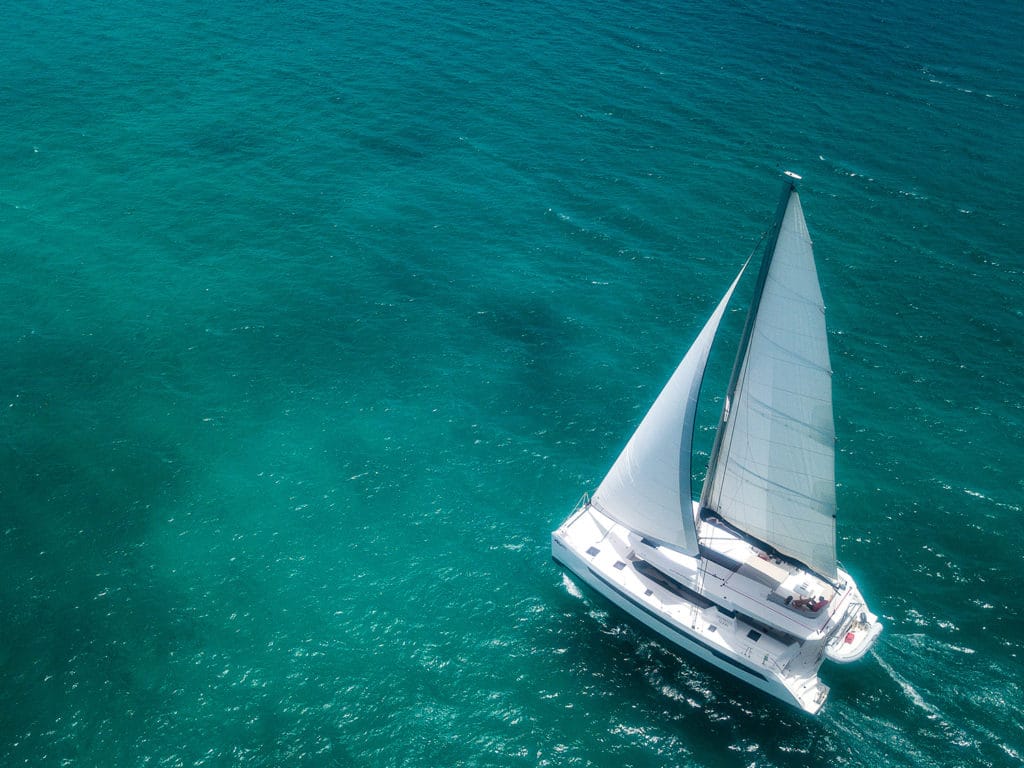
There’s one math problem that almost no boat owner ever wants to calculate: cost of ownership divided by actual days spent sailing. A stance of cheerful delusion might be the best way to accept the hard answer.
This is the problem charter yacht-ownership programs are designed to solve. If you talk with folks who’ve spent many years in the business of selling new boats into charter fleets and operating those fleets, you can expect to hear several cautionary themes: A sailboat is a depreciating asset; owning a charter boat is more a lifestyle choice than a financial investment; beware the aggressive tax-benefit pitch. Yet, by and large, they agree on this: If you love sailing and love traveling but you know that—for the next five years, at least—you won’t be able to devote more than four or eight or maybe even 12 weeks to it, placing a boat in charter will substantially offset the cost of owning it.
Consider this ballpark example from Dream Yacht Charter’s new Fractional Program, introduced this past fall. You put down roughly $200,000 for a 25 percent share in a new 45-foot Bali 4.5 catamaran. In exchange, for the five-year agreement, Dream Yacht covers all of the boat’s operating expenses (dockage, maintenance, insurance and so on), and you receive five weeks’ use on any similar boat at any of Dream Yacht’s 50 bases around the world. Every year of the contract, Dream Yacht sends you 5 percent of your buy-in price: $10,000 per year, or $50,000 over five years. Toward the end of the term, Dream Yachts lists the boat on the open market. If it sells before the end of the charter agreement, you receive your portion of the proceeds. If it doesn’t, Dream Yacht guarantees a 40 percent minimum buy-back value at resale, or $80,000. According to this math ($50,000 plus $80,000), by the end of the five-year term, you get $130,000 back from your original investment, and your total cost amounts to $70,000.
Now here’s where the sailing comes in. The average cost of chartering a Bali 4.5 is about $8,000 per week. The value of chartering a Bali 4.5 for two weeks per year over five years comes to $80,000; four weeks per year, $160,000; five weeks per year, $200,000. The takeaway: If you can go sailing for four weeks a year, with this program, you receive $160,000 in value for the $70,000 you spent. (And the ratio looks better still if you can get out sailing for five weeks a year.)
We’ve looked into the ownership programs offered by several of the major charter companies and charter-management companies around the world. These can be roughly divided into two categories: guaranteed income, or passive models; and variable income, or active models (in which you assume more of a role in managing your boat as a business). In addition, many charter companies offer other programs adapted to such special circumstances as crewed charters, fractional ownership, and special circumstances for particular countries. Each company has its particular quirks; we’ll aim to give an overview from which you can start your own conversations.
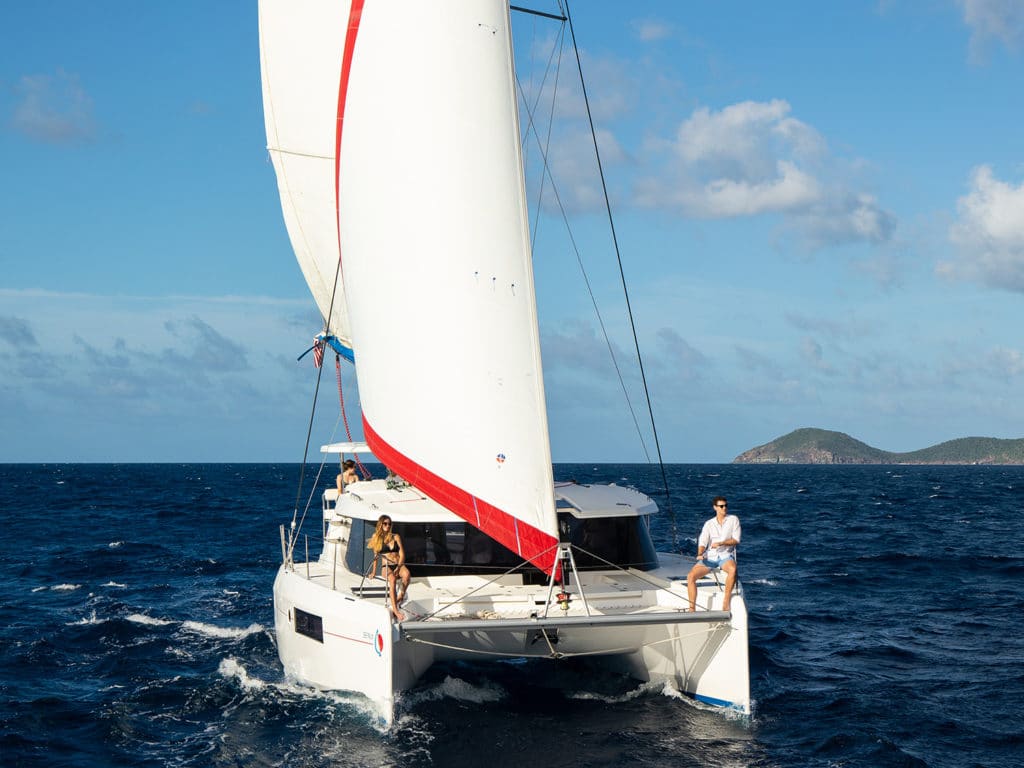
The Passive Model: Guaranteed Income
Full-scale bareboat chartering is just over 50 years old. Before that, you could always find a boat to charter directly from its owner or from a small mom-and-pop operation. But the business as we’d recognize it today began when Jack van Ost founded Caribbean Sailing Charters in Tortola in 1967. Dick Jachney soon followed with Caribbean Yacht Charters in St. Thomas, then Charlie and Ginny Cary started the Moorings in Tortola in 1969.
Jean Larroux has been with the Moorings, on and off, since 1976. Now the company’s yacht sales manager, Larroux is credited with creating the “guaranteed income” model that has become the most popular plan among the world’s largest charter companies.
“Before Ronald Reagan changed the tax laws in 1986, we used to sell basically only variable programs,” Larroux said. “But as the Moorings’ fleet grew, the appetite for boats was such that it was difficult with the variable program to find enough buyers. We sell 150 to 200 boats a year. So we found that to be able to sell that number of boats, we had to focus mainly on a program in which there was virtually no risk.”
The Moorings Guaranteed Income program works like this: You buy the boat and pay the registration fee. The Moorings leases it back for an agreed-upon term—more or less than 60 months, scheduled so the boat doesn’t come out of service during the chartering high season. During that period, the Moorings pays you 9 percent of the purchase price annually, broken into monthly installments. Those payments do not depend on how often your particular boat has been chartered. The company covers all operating costs: dockage, insurance and maintenance. As for sailing, the Moorings offers you as much as 12 weeks of chartering each year, depending on the season, and allows you to use any equivalent boat at any of the company’s bases. The only cost to you is a nominal turnaround fee to cover consumables (water, ice and fuel) each time you start a charter trip.
A ballpark example might look like this: You purchase a 50-foot Moorings 5000 catamaran for $1,000,000. You put down 25 percent and finance $750,000 for 15 years at 6 percent interest. Your monthly payment on the loan comes to about $6,300; each month, the Moorings pays you $7,463 for the lease. If you apply the entire fee to the loan each month, by the end of the term, you’ll owe $505,460. The Moorings estimates the boat’s resale value after five years at $580,000. And, as in our earlier example, the true value comes in sailing weeks—as much as $550,000 worth of chartering over those five years.
Nowadays, most large charter companies and some smaller ones offer a version of the guaranteed-income model. One constraint of this model is the charter company is likely to require that you spec out the boat for optimum charter appeal. If a 45-footer is offered with three cabins or four, for example, it’s likely that you’ll need to go with four. Compare companies.
The charter company you choose might steer you toward a particular make of catamaran. The Moorings sells mainly Robertson & Caine catamarans, branded as either Moorings or Sunsail boats. Dream Yacht sells Bali, Fountaine-Pajot and Lagoon. Horizon Yacht Charters sells Nautitech, Lagoon and Fountaine-Pajot. Navigare sells Fountaine-Pajot, Lagoon, Nautitech and Sunreef.

The Active Model: Variable Income
Before the advent of guaranteed-income programs, virtually all charter arrangements were on the variable-income model, and most companies still offer some version of it today. In this case, the costs and proceeds of chartering begin and end with your particular boat. It offers the flexibility for you to either use your boat more often—or use it less, and potentially make more money from it. It also gives you an active role of running your boat as a business, which might have tax implications. (There are no tax breaks for such passive investments as the guaranteed-income model.)
The Catamaran Company is a charter-management company that works exclusively on the variable-income model. Whereas guaranteed-income programs might dictate the way your boat will be laid out and appointed, CatCo offers its owners unlimited choice. “What is always going to charter best,” said Hugh Murray, CEO of CatCo, “is the boat you can put more people on for the cheaper price. So the income projections for an owner buying a four-cabin boat will be higher than for the owner of a three-cabin boat. But in a lot of cases, our owners are likely to want fewer weeks rather than more weeks.”
With a variable program, the boat owner covers all the costs of operating the boat, and the charter operator splits all the income from charters, with the larger portion going to the owner. Horizon Yacht Charters splits 80 percent (to the owner)/20 percent (to the company). CatCo splits 77 percent/23 percent. Dream Yachts and the Moorings split 65 percent/35 percent.
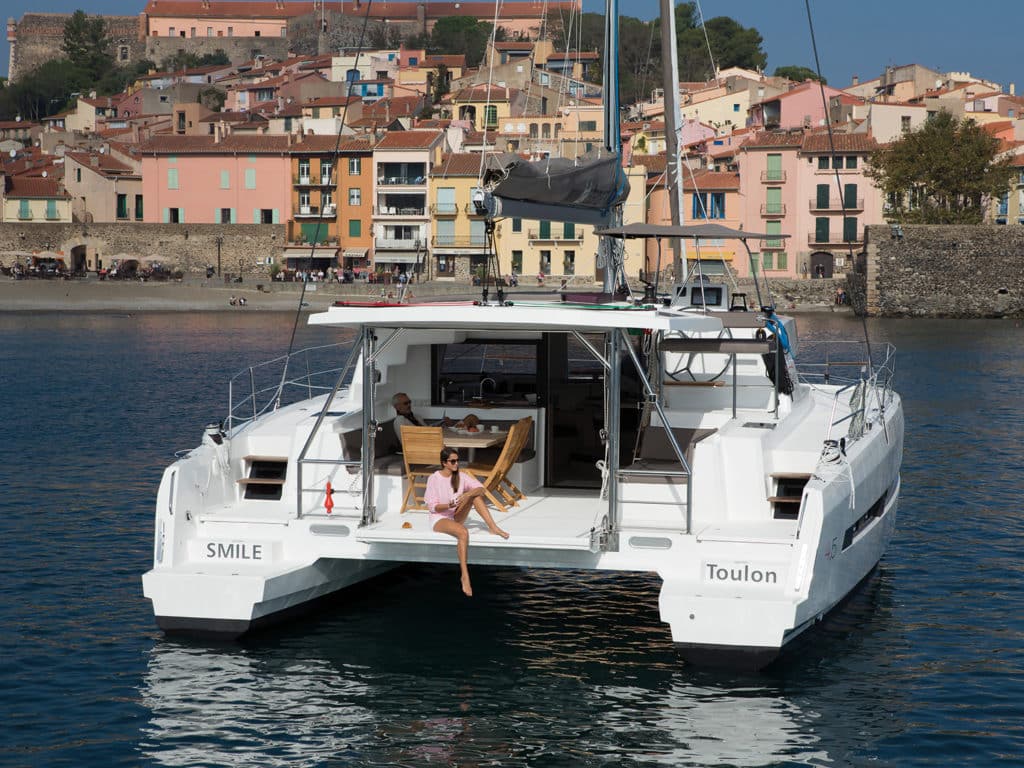
Typically, the charter operator sends the boat owner a statement every month, detailing the charter revenue and the boat’s expenses (docking, water, maintenance, turnaround, electricity, repairs, cleaning and laundry). This statement comes with either a check or a bill. “It goes both ways,” Murray said, “depending on what time of year their boat arrives in the fleet. If a boat arrives in December and starts chartering immediately, you’ll start to get good revenue. If your boat arrives in July, and there’s very little happening in August, September and October, you’re getting a bill.” On average, he says most owners see a return of 9 or 10 percent of the boat’s purchase price per year.
What about tax breaks? Jean Larroux told me that the Moorings does not actively market them as an incentive. “It’s marginal whether you’ll survive a tax audit,” he said.
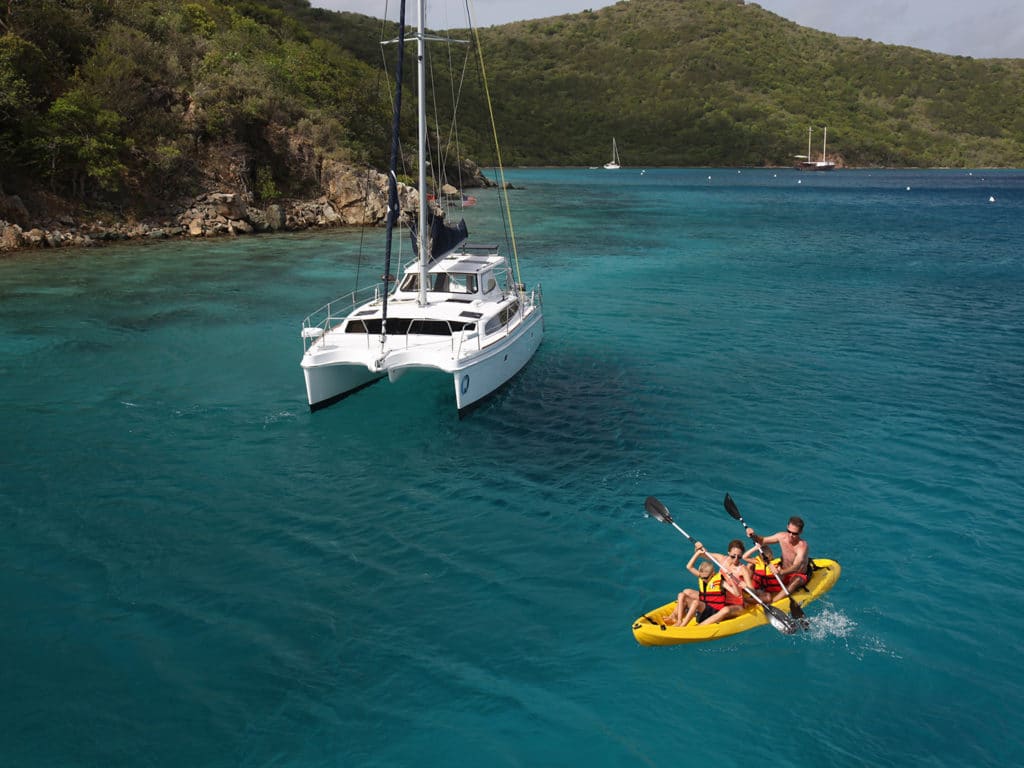
Others I spoke to concur. “We do not market the tax benefits whatsoever,” Murray said. “If somebody wishes to do it, we’re happy to refer them to tax consultants.”
That said, each person I spoke to said they had some clients who were able to make tax benefits work with a variable program. “That’s exactly the difference between our guaranteed-income and our Performance programs,” said Eric Macklin, yacht sales manager for Dream Yacht Charter, referring to the name Dream Yacht gives to its variable-revenue model. The IRS, Macklin says, sets two benchmarks. The first is that the boat owner has to be “actively participating” in the business. The second is that the owner has to show the intention and the ability to earn a profit. As others do, he recommends working closely with a tax adviser first.
The takeaway is that a variable-revenue program might offer you more flexibility in every aspect of owning a boat in charter service: how you spec your boat, how often you use your boat, and how active you’d like to be in the business.
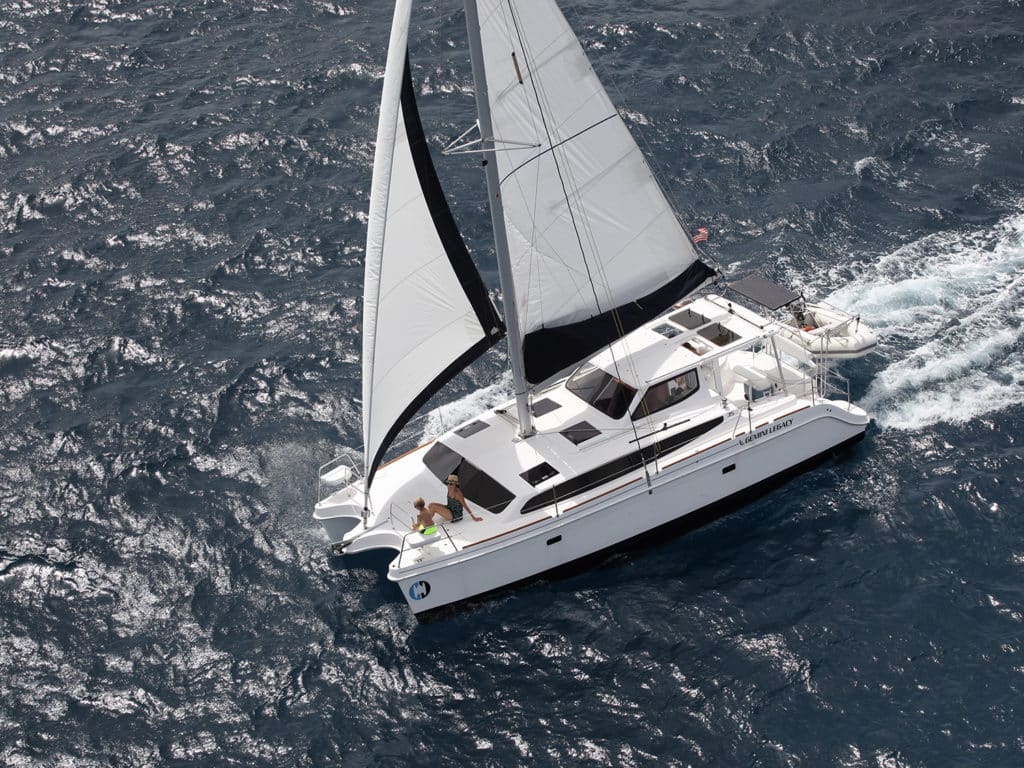
Alternative Models
While the guaranteed-income and variable-income programs are the most popular, ask the charter company about others too. At the top of the piece, we looked at one of these: Dream Yacht’s new Fractional Program, which allows you to buy into part of a boat. Most companies offer programs adapted to setting up your boat for crewed charters, with different levels of involvement from you in the hiring of crew and the marketing of the boat. Ask the Moorings about its Option to Purchase program for boats in such countries as Greece or Thailand, where strict citizenship laws apply; or ask Dream Yacht Charter about its Forward Sale program. Horizon Yacht Charters offers what it calls “the ultimate test sail.” You can charter a boat for up to a week; if within three months you decide to purchase a boat from them, they’ll deduct the cost of the charter from the purchase price.
Whether or not you put your boat in charter service, the reckoning of cost per use always works better the more you sail. But by starting with an honest estimate of how much time you’ll actually get to go sailing—particularly if it’s limited to something between four and 12 weeks a year—putting your boat into charter service might help you suspend the delusions and face the math more cheerfully. Even rationally.
Tim Murphy is a Cruising World editor-at-large.
Charter Companies and Programs
The following list is a selection of the charter companies that contributed to this article:
Dream Yacht Charter Horizon Yacht Charters Navigare Sunsail The Moorings
The following is a list of charter-management companies that contributed:
Atlantic Cruising Yachts The Catamaran Company CYOA Sail Caribe/Atlas Yacht Sales TMM/Tortola Marine Management
For more details, see Cruising World ‘s Owning a Charter Sailboat
Charter-Ownership Programs
The Catamaran Company: founded 1989; sells Fountaine-Pajot, Gemini, Lagoon and Nautitech cats, each spec’d by the owner. The charter-management operation has one base in the BVI, operating 31 boats at press time. Active model: variable income, based on your particular boat.
Dream Yacht Charter: founded in 2000; sells Bali, Fountaine-Pajot and Lagoon cats. Offers guaranteed-income, variable-income, fractional and crewed-yacht programs. The charter company has more than 1,000 boats in service at 50 bases around the world.
Horizon Yacht Charters: founded 1998; sells Fountaine-Pajot, Lagoon and Nautitech cats. Guaranteed income or split-revenue programs available. The charter company operates 120 boats at three bases in the Caribbean.
Navigare: founded in 2001; Offices in Sweden, Croatia and the Caribbean; Sells Fountaine-Pajot, Lagoon, Nautitech and Sunreef cats. Guaranteed-income or variable-income programs available, among others. The company operates 300 boats in nine countries, with a strong presence in Europe.
The Moorings/Sunsail: The Moorings was founded in 1969. Now, together with Sunsail, the company is owned by Travelopia, a travel company that comprises 50 brands, specializing in sailing, safaris, sports tours and Arctic expeditions. The Moorings and Sunsail sell catamarans built by Robertson & Caine in Cape Town, South Africa. These boats are branded according to their use: A 45-footer for private ownership is branded as a Leopard 45; for charter, a Moorings 4500 or a Sunsail 454. For a limited time, the Moorings is also selling Lagoon cats. Guaranteed-income or variable-income programs available, among others. The company operates 840 charter boats at more than 20 bases around the world. Every year it brings between 150 and 200 new boats into its fleet.
- More: catamarans , Charter , Charter Planning , owning a charter boat , Sailboats
- More Charter

The Moorings Expands in Croatia
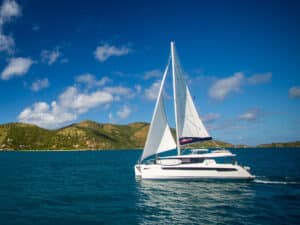
78 New Yachts Join The Moorings and Sunsail
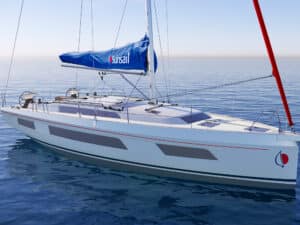
Sunsail, The Moorings Announce Partnership with Dufour Yachts
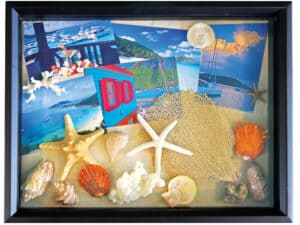
Charter Life: Making Memories and Bringing Them Home

A Big, New World

Cruising World On Board: Windelo 50

Into the Mystic: A Pacific Northwest Adventure

How to Ride a Wave
- Digital Edition
- Customer Service
- Privacy Policy
- Email Newsletters
- Cruising World
- Sailing World
- Salt Water Sportsman
- Sport Fishing
- Wakeboarding
Catamaran Loans
Catamaran financing.
NATIONWIDE LOW RATES
We search nationwide for the best boat loan rates and terms for you. Even if you have past credit problems.
FAST, eASy APPROVAL
Sign and submit your documents right from your smart phone and we can have your application funded in as little as 48 hours!
PROTECT YOUR CREDIT
With our hands on approach and pre-qualification process, we reduce the number of inquires from lenders by only sending you to lenders that match your needs.
Your Adventure Starts Here.
Whether you buy a new or used Catamaran , your best bet for Catamaran financing My Financing USA. With Catamaran loans up to $5,000,000, we can connect you to the right lender for your financial goals.
We source financing for our clients by reaching out to lenders and finding the best rates and terms for the loan. You enjoy greater flexibility, allowing you to determine which offer works best with your financial situation. We offer services in the 48 contiguous states and Alaska. You could close on your yacht within days with My Financing USA.
Fast, Easy and Secure Catamaran Financing
We have streamline the Catamaran loan process at My Financing USA. Our approach is simple: Apply online: You submit your application online through our DigiCert Secure portal. Get a loan: We pre-qualify your application and only send it lenders that match your needs to reduce inquiries and protect your credit rating. We'll then present you with financing options from across the nation so that you can choose the best loan for your needs. Sign and sail: After you sign your name on the dotted line, it's time to take the boat out onto the water. Not confident you'll qualify? Contact our experienced financing specialists today. We'll help you find the best loan opportunities available. Why? It's our mission to get you on the water in a boat you'll be proud to circumnavigate in.
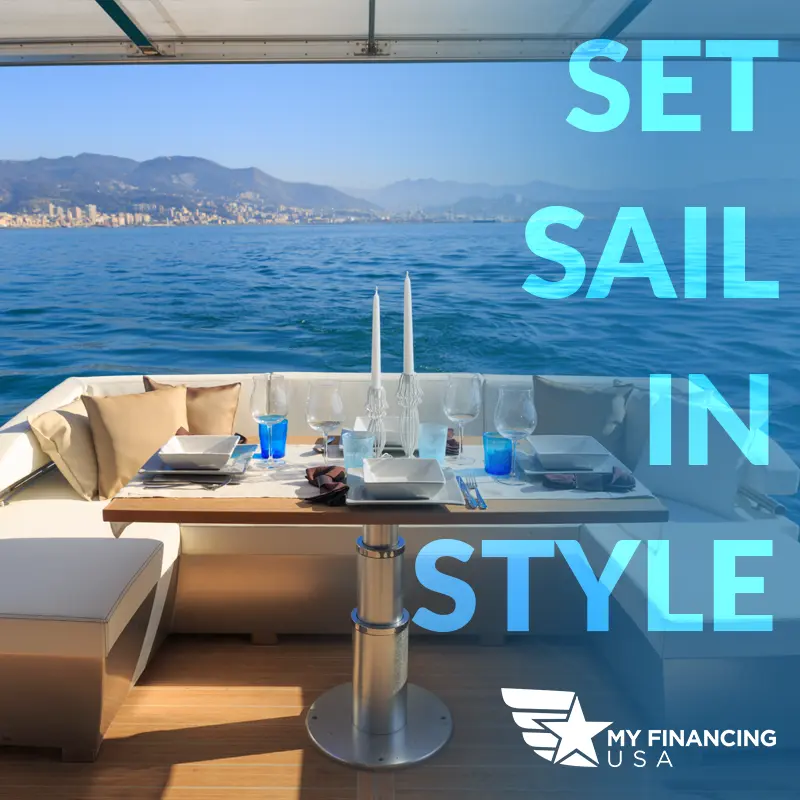
A Company You Can Trust

National Marine Lenders Association
We are a contributing and accredited member of the NMLA.

5 Star Rated On Trustpilot
We are the highest rated RV & boat lender in the USA.

Better Business Bureau
We have the highest possible rating from the Better Business Bureau.
Additional Readings:

Best Places to Go Boating
We've compiled a list of the best boating lakes in the United States to help plan your future nautical expeditions. We'll show you where to go boating within your region or state, as well as dream locations for your next extended boating vacation. Check out our list of the best places to go boating!

Best Boating Activities
Whether you're taking a scenic solo trip, treating the family to a lakeside vacation or relaxing on a romantic getaway, here are the best games to play on a boat and the most popular boating activities to make your next boating adventure unforgettable. With our inspiration, you'll never be bored at sea!
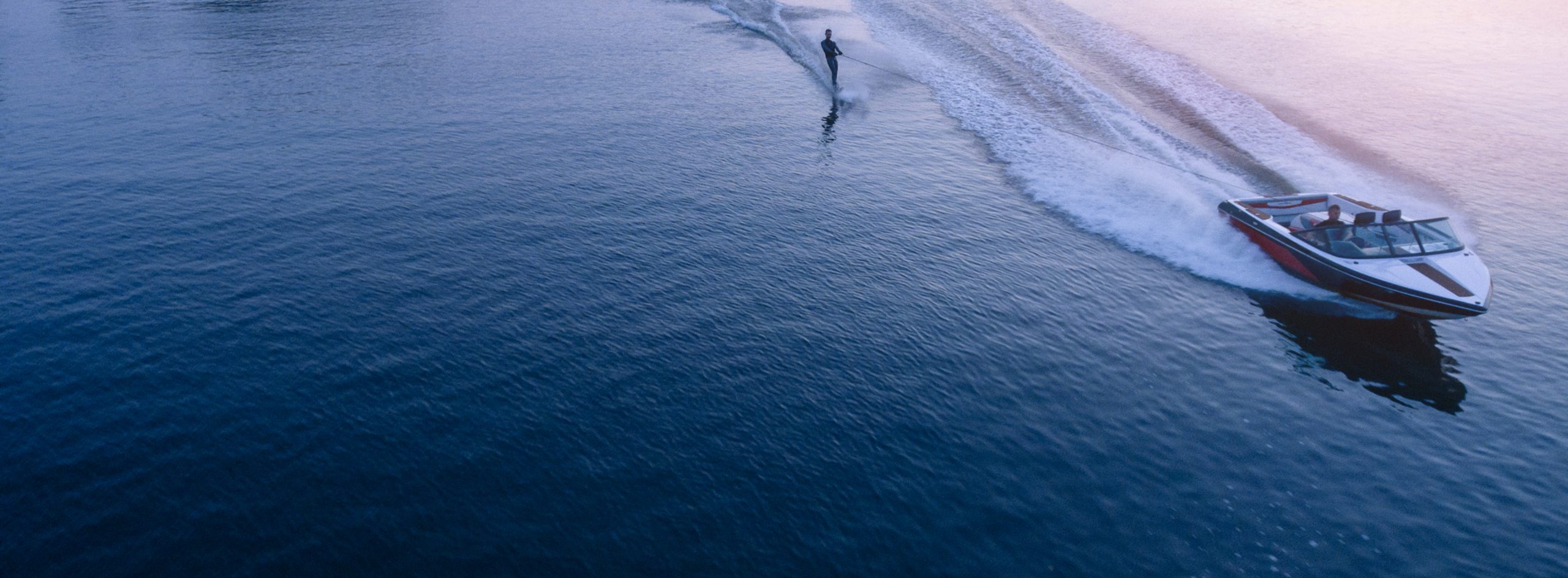
Costs Of Boat Ownership
1-800-USA-1965
Get prequalified in just 5 minutes!
Call 1-800-USA-1965 for more information.
- Name * First Last
Catamaran Loans
Contrary to what many people believe, you do not have to be rich to go cruising with your catamaran. this is because there are very many financial institutions in the country that can give you funding to buy your own catamaran. all you need to do is choose a good lender that has your interest at heart and apply for the loan. however, it is important to note that there are very many fraudsters in town and therefore you need to take great caution when making the choice of borrowing from which lender. do not therefore shy away from realizing your dream of owning a catamaran and participating in your favorite hobby that is cruising..
Guidelines of the Catamaran Loans
The number one concern that your lender has is how he or she can get back their money, which they lend it to you. In order to make sure that the borrowers who they lend their money to do not default, they have set guidelines which you need to surpass for you to qualify for the loan. Below are some of these guidelines.
A Credit Score of Over 600
Your credit score is your selling point, whenever it comes to applying for any type of a loan. This is because it is one of the parameters that lenders look out for whenever they are choosing on who qualifies for their loan or not. The minimum credit score that you can have for you to be considered is 600. However, in case you have a 700 credit score and above, your lender can give you a certain amount of discount. Before applying for a catamaran loan therefore, you need to make sure that your financial status is in check.
Higher Debt to Income Ratio
Another catamaran loan guideline that you must surpass for you to qualify for the loan is your debt to income ratio. Your lenders want to know that your normal financial situations won’t be affected by the loan that they give you. This is to ensure that the people who are awarded the loan do not default on the same. For you to be considered for the loan therefore, you need to have acceptable amounts of loans, as compared to your income. Your income should be able to finance the loans without any hitches. Therefore, make sure that you have reduced your debts before applying for catamaran loan.
A Stable Source of Income
As stated earlier, lenders only think of how they can recover their money and earn the interest, because it is their money that we are talking about here. For you to be considered for the catamaran loan therefore, you must satisfy your lender that you are in a good position of servicing it. The best way to prove this is by having a stable source of income from where you will be getting the resources to service the loans. Whenever you have a stable source of income, your lender can rest easy knowing that the chances of you defaulting the loan arevery low.
Tips of Choosing Your Catamaran Loan Lender
Owing to the increase in demand for the catamaran loans, a lot of fraudsters have pitched camp in the sector; ready to devour your hard earned cash like their life depends on it. That is the reason why you need to be extra careful when choosing your lender. Below are some of the tips of choosing your catamaran loan lender.
Do your Research
The number one de-service that you can ever do to yourself is going to buy a catamaran loan without prior knowledge of what it entails. This is because you will be an easy prey not only to the fraudsters but also unscrupulous business people who are ready to take advantage of you. Therefore, before going to find a good catamaran loan lender in town, you need first of all to do research on the same, which is readily available in the online platforms. While doing so, weed through the reviews of the different catamaran lenders who are on your radar, their rates, the packages that they offer and the general market rates for the catamaran loan. This will help you make an informed decision when choosing your lender.
Weed through their Reviews
You can never get to know your lender by just merely looking at their social media platforms or website. You need to get extra and intricate details about them to make an informed decision about the same. The best path to achieve this is by looking at what their earlier clients have talked about them, as they are the ones who have interacted one on one with the lender. You can get these reviews in the various reputable review sites and you can even do a follow up by calling the people who have written the review. Take everything you see in the review section very seriously, as it reflects the type of lender that you will be dealing with for a very long time.
Visit the Lenders Business Premises
In today’s day and age where people are ordering everything that they need online, falling for fraudsters or choosing a bad lender can be very easy. It is therefore incumbent upon you to make sure that the lender that you are choosing is top notch and up to the task. You can never achieve this by doing video calls with the lender; you need to visit them in person in order to see the type of people that they are. Whenever you visit their premises, ask them to provide you with the certification and licenses, look at their customer care services, and choose catamaran loan lender who is easily accessible and who has your genuine interest at heart.
Steps To Take Before Choosing A Catamaran Loan
Although the type of catamaran loan lender that you choose directly impacts on the quality of loan that you get, you can push a little more to ensure that you get the loan that has your best interests at heart. Here are some of the steps you need to follow in order to achieve this.
Step 1: Consult Professional Help
It goes without saying that loan agreements are written in a legal jargon that is very hard to understand to common man. You should however never sign a contract which you never know what it contains. In order to avoid any inconveniences in the future, it is important to seek professional help from experts who know much about the catamaran loans. You can consult a financial attorney or even a catamaran lender, who will explain to you what the contract entails as they are in a well versed position to advise or help you decipher the agreement. . Only sign a catamaran loan agreement once you have understood what it requires of you and agrees with it.
Step 2: Compare the Interest Rates
Different catamaran lenders have different catamaran loan packages for their clients. This is in an attempt to lure their clients in taking up the loans. This therefore means that because one lender charges a certain amount of interest does not mean that all catamaran lenders charges that. You need to ensure that the interest rate that the catamaran loan is attracting is not only fair to you but also has your interest at heart. You should never let any lender to take advantage of you by charging you more than what is supposed to. In order to avoid this, you need to do research on the average catamaran loan interest rates and choose a lender that offers you that.
Step 3: Negotiate for the Rates
Just because your lender has stated that the interest rate of the catamaran loan you are about to take is a certain percentage, does not mean that, that is the only option that you have. Some lenders are quite flexible when it comes to negotiating the rates of the catamaran loan. Therefore, do not just accept the rates just because your lender has said so. You need to negotiate for the best rates possible and also the amount of money that you will be receiving to buy your catamaran. Remember that you interests ought to take precedence here and as such, make sure that the interest rates that you will pay are not only fair but also affordable to you. However, it is not a must that your lender will reduce the rates, but it is worth a try.
Learn more with J.J. Best Banc & Co. Call us at 1-800-USA-1965 , or fill out our online application form.
Prequalify in five minutes or less!
Call us at 1-800-USA-1965 , or fill out our online application form.
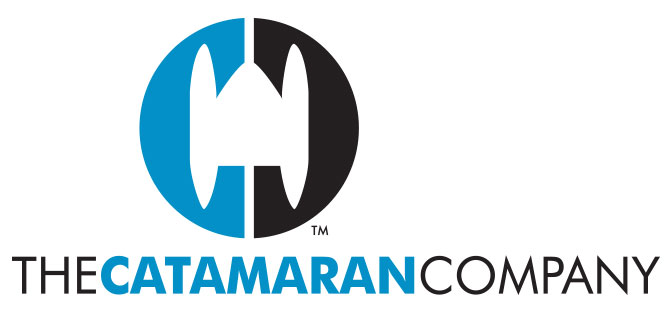
Ready! Set! GET PRE-QUALIFIED!*
LH-Finance and Lagoon give you the opportunity to join us at the United States Sailboat Show October 14 - October 18, 2019 as a VIP
Upon qualification, you will receive your LH-Finance VIP packet that includes your VIP Card, 2 complimentary boat show tickets and access to the VIP Pavilion.
LH-FINANCE PRE-QUALIFICATION VIP PROGRAM WITH THE CATAMARAN comPANY:
This is a unique innovative VIP program that we have developed with our customers in mind to allow boat buyers to get pre-qualified for marine financing in advance of purchasing participating new boat brands. Getting pre-qualified is the initial step in the boat loan process. Simply fill out this form and one of our lending specialists will contact you to start the pre-qualification process. Applicants supply us with their overall financial picture (income, assets, debts...); credit reports will not be pulled. After evaluating this initial information, your lending specialist will inform you of the loan amount that you may qualify for. Upon qualification, our customers receive a VIP Experience package at the following 2018-2019 Boat Shows:
- United States Sailboat Show, October 14 - October 18, 2019 City Dock, Annapolis, Maryland
Which includes:
- LH-Finance VIP Card to use at shows, lounges and partners' booths where you will be sure to receive VIP treatment
- 2 complimentary Boat Show tickets
- 2 complimentary Admissions to the VIP Lounges at the shows listed above
- Participation Varies: Most shows include complimentary Cocktails and Tapas while in the VIP Lounges
*Subject to credit approval.

Yacht Financing, Lower Interest Rates, & Seller Financing
Overseas radio network – yacht financing, ways to lower interest rates, & seller financing.

- Yacht financing
- Ways to lower interest rates
- Seller financing through 501c3 charities
ESTELLE COCKCROFT: Welcome back to “Yachts: The Perfect Escape Vehicle”. We have been talking about insiders’ secrets to buying boats. We have now kind of decided, guys, what we want, we know how much we want to pay we have done our research but how do we finance the boat?
For a transcript of this podcast, click “read more” below.
Yacht Financing
STEPHEN: Financing is a pretty broad subject. The best thing to do is to ask your broker who he recommends or the preferred marine lenders. There are a lot of lenders that specialized in the marine loans. You know the marine lenders constantly gives the brokers rates that are available. Essentially now a days in this depressed economy, you get rates as low as 4 ½ % up to 5 but 4 ½ seems to be where it is at right now.
Generally, the lenders are looking for 20% down and they will amortize over 15 to 20 years. My personal recommendation is to put down 20% and amortize over the leas number of years that you possibly can so that you can get principle down on the loan. If you can put the boat into charter, you need to know that the lenders do not recognize the charter income. When they do the due diligence on the loan they will check and make sure that you can carry the loan without the charter income.
If you are buying a charter yacht, then your financing resources are limited so you need to talk to your charter broker about who should be approached. Generally private loans are a lot easier to get than charter loans so you need to get some advice from your broker and marine lender when making an application when to put your boat into charter specifically.
ESTELLE: Well that’s a good tip. Gary, how about you on financing?
GARY: Well I highly recommend that you get preapproved by a lender. It is free to do this and marine loans have no points to qualify. They are all you know just simple interest loans, no prepayment penalty. If you know that you are only going to keep the boat for 2 to 3 years, then you can keep your out of pocket expense surprisingly low if you amortize the low over the longest period possible which I realize is the opposite of what Stephen is saying. But it all depends on your strategy as to how long you are going to keep the boat.
One thing to remember is that lenders based their loan approval very heavily on the Beacon or FICO credit scores and I would definitely go find out what my latest FICO scores are. There are a number of different websites where you can do this. Identityguard.com is a very good one. It is about $14 a month to monitor your credit scores. And lenders like to see the score in the 700s or higher.
And they also look at your debt to income ratios. They want this to be below 35% so you really need to know before you go looking at a bunch of boats what you can qualify for because I can’t tell you how many people I talk to who say yeah I want to buy this boat, I’ve got $100,000 to put down you know I think my budget is around $400,000. We go look at a whole bunch of boats only to find out we got a little credit glitch there and we can’t qualify for that amount but we can get say half that amount, it is best to pre-qualify yourself beforehand.
STEPHEN: I have another little tip. In this market where we are having difficulty getting loans, I am finding that buyers are using their…if they have equity in real estate, what they are doing is they are getting a real estate equity loan and they are buying their boat with that. The interest rates are really, really low when you do it this way.
Another interesting way to do it is if you have investments you can often get and investment-based loan where your investment acts as a guarantee. So you can get an investment based loan which gets you out of the agony of having to provide all sorts of personal information and personal finances and you know the questions are just never ending these days when it comes to these banks giving you a loan.
GARY: I just remembered something else and it has to do with your FICO scores that the lenders look at when you are getting prequalifies for a loan. And what I found out is that whenever your credit card balances go above 50%, so in other words if you have a credit line for $10,000 and if you owe more than $5,000 in that month it negatively impacts your FICO scores dramatically.
So what you want to do is when you look at your credit if you see that any of your credit cards have more than 50% of your total credit line owed be sure and pay them down it takes about 3 weeks to 4 weeks to impact your scores but your scores will shoot up again if you make sure that all of your credit cards are below 50% level.
Another thing that I would like to talk about is marine lenders you know there is a lot of banks out there that says they are interested in yacht lending. And they really aren’t. What they really are doing is they want to find that 1 in a 100 golden borrower or you know whose saving accounts they can also get. So a lot of these little banks really aren’t in the business will waste your time you will fill out dozens of forms only to be rejected if you don’t have 110% perfect credit or if you don’t have the big fat savings accounts that they want to get their hands on.
You see that’s what they look at when they are evaluating your loan apps so if you talk to the brokers which is Stephen and myself we know who is real who really wants to lend money and we can guide you to those lenders. Stephen, you have anything else?
STEPHEN: Yeah, another tip when it comes to your interest payments: you can deduct the interest on the loan as the second home deduction, a second home mortgage deduction, unless you already have this deduction with another home. The IRS says that a boat qualifies as a second home if it has cooking facilities and a toilet. This can be a port-a-potty and a sterno stove, so be sure to take that deduction.
Seller Financing Through 501c3 Charities
GARY: I often get asked about seller financing, when purchasing a yacht and you know it just doesn’t happen. You know with boats and yachts you can move them around. You can take them to Brazil if you want to but with real estate you can’t, so but it is possible and very few very rare cases to get some seller financing and those are through the 501c3 charities.
These are IRS-approved groups who helped like disadvantage children or whatever. And they take boats they are donated and then they will resell them and they use the proceeds to fund their activities. In generally you need to put down about 40% of the value and you will have payments stretched out over probably 3 to 5 years it is a quicker pay off than you would get under the usual marine financing. So we can help you with that, but also remember that your choices of yachts are severely limited when you are looking at these seller financing boats. And most of these are boats that couldn’t be sold for one reason or another, like they’re really run down or they are out of style or whatever so I would pretty much forget about seller financing.
STEPHEN: Well, I think there is another issue that we need to discuss. I think we are running out of time in this segment, but the benefits of new versus pre-owned yachts. This is a pretty big subject and I think it needs to be clearly understood in terms of what the benefits and what the pitfalls are of new versus pre owned.
GARY: Yeah, and this is something that can take quite a while to discuss and so we are going to take a short break and we will be back to talk about the benefits versus pre-owned. This is Gary Fretz and you are listening to “Yachts: The Perfect Escape Vehicle”, only on the Overseas Radio Network.
Estelle Cockcroft
Join our community.
Get the latest on catamaran news, sailing events, buying and selling tips, community happenings, webinars & seminars, and much more!
Leave a Comment Cancel Reply
Your email address will not be published. Required fields are marked *
Save my name, email, and website in this browser for the next time I comment.
Recent Posts

Annapolis Open House 2024
Join us at Pier 7 Marina located at 48 S River Rd South, Edgewater,

Paramount Business Jets Partners with Charter Agency!
The collaboration of Myst Yacht Charters and Paramount Business Jets offer you the most luxurious yachts
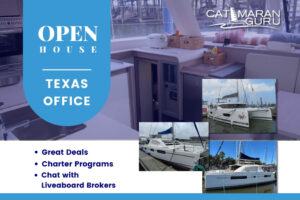
Texas Open House
Join us April 13 – 14 for our open house at our Texas office during the

First-Annual Virgin Islands Boating Exhibition (VIBE)
VIBE – It’s a Destination Boat Show! Join us May 10 – 12 at

For more than 30 years, we have been a part of the catamaran community and created Catamaran Guru™ to encourage and educate all the aspiring sailing out there. We understand the dream of traveling the world by catamaran and created a one-stop-shop to make that dream a reality for you.

- Stephen & Estelle
- Testimonials
Get Started
- Yacht Sales
- Used Yachts
- Charter Management
- Boat as Business Programs
- Seminars & Events

The Ultimate Guide to Choosing Between a Sailboat or Catamaran for Your Sailing Adventures
C hoosing between a sailboat and a catamaran for your sailing adventures is a significant decision that depends on various factors, including your sailing preferences, experience level, budget, and intended use. Here's an ultimate guide to help you make an informed decision:
1. Sailing Experience:
- Sailboats: Typically require more skill and experience to handle, especially in adverse weather conditions. Ideal for sailors who enjoy the traditional feel of sailing and are willing to invest time in learning and mastering the art.
- Catamarans: Easier to handle, making them suitable for beginners. The dual-hull design provides stability, reducing the learning curve for those new to sailing.
2. Space and Comfort:
- Sailboats: Generally have a narrower beam and less living space. However, some sailboats may offer comfortable cabins and amenities.
- Catamarans: Wider beam creates more living space. Catamarans often have multiple cabins, spacious saloons, and expansive deck areas, providing a more comfortable living experience.
3. Stability:
- Sailboats: Monohulls can heel (lean) while sailing, which some sailors enjoy for the thrill but can be discomforting for others.
- Catamarans: Greater stability due to the dual hulls, providing a more level sailing experience. Reduced heeling makes catamarans suitable for those prone to seasickness.
4. Performance:
- Sailboats: Known for their upwind performance and ability to sail close to the wind. Some sailors appreciate the challenge of optimizing sail trim for efficiency.
- Catamarans: Faster on a reach and downwind due to their wide beam. However, they may not point as high into the wind as monohulls.
- Sailboats: Typically have a deeper draft, limiting access to shallow anchorages and requiring deeper marina berths.
- Catamarans: Shallow draft allows access to shallower waters and secluded anchorages, providing more flexibility in cruising destinations.
- Sailboats: Generally more affordable upfront, with a wide range of options available to fit different budgets.
- Catamarans: Often more expensive upfront due to their size and design. However, maintenance costs may be comparable or even lower in some cases.
7. Mooring and Docking:
- Sailboats: Easier to find slips and moorings in marinas designed for monohulls.
- Catamarans: Require wider slips and may have limited availability in certain marinas, especially in crowded anchorages.
8. Intended Use:
- Sailboats: Ideal for traditional sailors who enjoy the art of sailing, racing enthusiasts, or those on a tighter budget.
- Catamarans: Suited for those prioritizing comfort, stability, and spacious living areas, especially for long-term cruising and chartering.
9. Resale Value:
- Sailboats: Generally have a more established resale market, with a wider range of buyers.
- Catamarans: Growing in popularity, and well-maintained catamarans often retain their value.
10. Personal Preference:
- Consider your personal preferences, the type of sailing you plan to do, and the kind of lifestyle you want aboard your vessel.
In conclusion, both sailboats and catamarans have their advantages and disadvantages. Your decision should be based on your individual preferences, experience level, budget, and intended use. If possible, charter both types of vessels to experience firsthand how they handle and to help make a more informed decision based on your own preferences and needs.
The post The Ultimate Guide to Choosing Between a Sailboat or Catamaran for Your Sailing Adventures appeared first on Things That Make People Go Aww .

THE 10 BEST Moscow Boat Rides & Cruises
Boat rides & cruises in moscow.
- Boat Rentals
- Scuba & Snorkeling
- Fishing Charters & Tours
- Stand-Up Paddleboarding
- Water Sports
- Surfing, Windsurfing & Kitesurfing
- Kayaking & Canoeing
- Waterskiing & Jetskiing
- River Rafting & Tubing
- Parasailing & Paragliding
- Dolphin & Whale Watching
- Speed Boats Tours
- Submarine Tours
- 5.0 of 5 bubbles
- 4.0 of 5 bubbles & up
- 3.0 of 5 bubbles & up
- 2.0 of 5 bubbles & up
- 3rd Transport Ring (TTK)
- District Central (TsAO)
- Garden Ring
- District Northern (SAO)
- Good for Big Groups
- Good for Couples
- Good for a Rainy Day
- Budget-friendly
- Good for Kids
- Hidden Gems
- Honeymoon spot
- Good for Adrenaline Seekers
- Adventurous
- Things to do ranked using Tripadvisor data including reviews, ratings, photos, and popularity.

1. Flotilla Radisson Royal

2. Moscow River Boat Tours

3. Sup-Club

4. Akvanavt Diving Centre

5. Diving Center Crocus City Oceanarium

6. CheapRussia Tours
7. Kite School Kiteclass

8. SUP Center

9. Erwin. Reka
11. Easy Russia Tour Guide
12. Lovely Russia Tours

13. Capital River Boat Tours - Moscow Centre

14. Alfa Centr
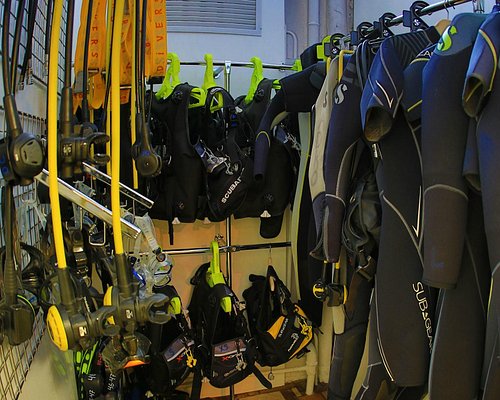
15. Diving Club Divers

16. Sup Outdoor

17. MORE MOSCOW
19. Soho Sailing Style

20. Diving Center Crocodile

21. Mosparokhodstvo
22. Dive-Project

24. Kosinskiy Children Marine Club

25. Kayak Moscow
26. DIVECLUB CHE

27. FLOW Moscow

28. Moswake

29. Morskiye Volki

30. S-cruises
What travelers are saying

- CheapRussia Tours
- Easy Russia Tour Guide
- Lovely Russia Tours
- MORE MOSCOW
- Insider Moscow Tours
- Flotilla Radisson Royal
- Moscow River Boat Tours
- Capital River Boat Tours - Moscow Centre
- Diving Center Crocus City Oceanarium
- Vessel Reviews
- Passenger Vessel World
- Offshore World
- Tug and Salvage World
- Maritime Security World
- Specialised Fields
- Marine Projects World
- Small Craft World
- Tanker World
- Dry Cargo World
- Boxship World
- Aquaculture World
- Trawling World
- Longlining World
- Seining World
- Potting World
- Other Fishing Methods
- Regulation & Enforcement
- Feature Weeks
- Classifieds
- Book Reviews
VESSEL REVIEW | Sinichka – Electric commuter boats designed for Russia’s Moskva River
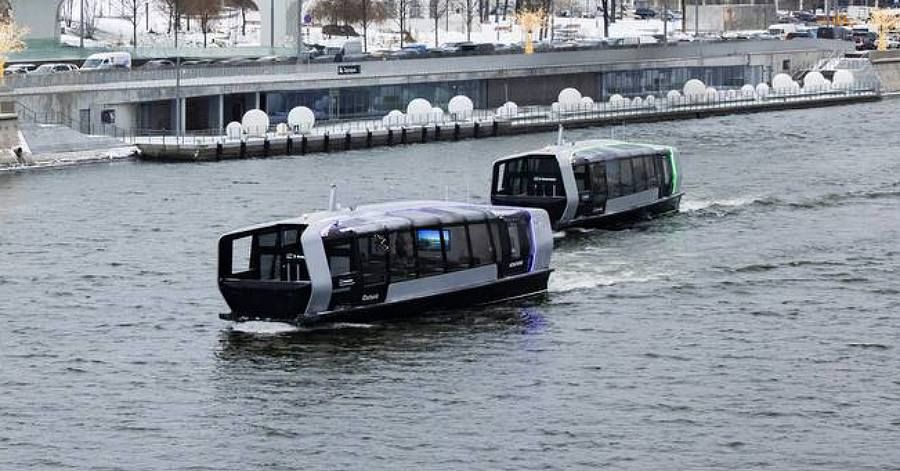
A series of three new electric monohull commuter ferries have already begun operational sailings on the Moskva River in the Russian capital Moscow.
Built by Russian shipyard Emperium, sister vessels Sinichka , Filka , and Presnya – all named after rivers in Moscow – are being operated by the Moscow Department of Transport and Road Infrastructure Development (Moscow Deptrans). They are the first units of a planned fleet of 20 vessels that will serve the capital city and other nearby communities. The new ferry system will be the water transport system to be operated on the Moskva River in 16 years.
Each vessel has a welded aluminium hull, an LOA of 21 metres, a beam of 6.2 metres, a draught of only 1.4 metres, a displacement of 40 tonnes, and capacity for 80 passengers plus two crewmembers. Seating is available for 42 passengers on each ferry, and the main cabins are also fitted with USB charging ports, wifi connectivity, tables, toilets, and space for bicycles and scooters. The cabin layout can be rearranged to allow the operator to adjust the distances between the seats and to install armrests of varying widths.
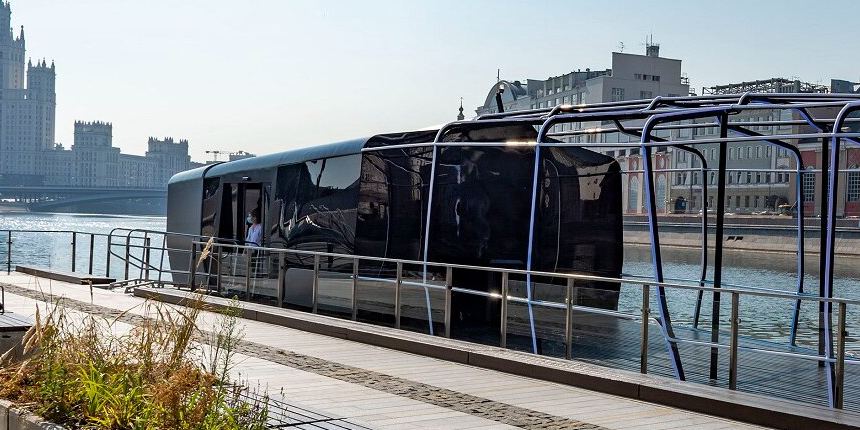
An open upper deck is also accessible to passengers and is the only area on each ferry where smoking is allowed.
The ferries are all of modular construction with each ferry’s wheelhouse, main cabin, and other structural elements being built as complete, separate components. This enables the ferries to be easily dismantled for transport to anywhere in Russia by rail and then quickly re-assembled within seven days.
The ferries are also ice-capable. Recently completed operational trials on the Moskva showed that the vessels can also easily navigate under mild winter conditions with broken surface ice, though year-round operations are planned for the entire fleet.
The ferries are each fitted with 500kWh lithium iron phosphate battery packs that supply power to two 134kW motors. This configuration can deliver a maximum speed of 11.8 knots, a cruising speed of just under 10 knots, and a range of 150 kilometres.
Emperium said the transfer of rotation of electric motors to the propeller is carried out by direct drive. As a propulsion installation, a pulling rotary propeller-steering column with double screws is used. The installation of double pulling screws, with similar power, allows an operator to increase the efficiency of the propulsion system to deliver a slightly higher speed or to reduce energy consumption. This arrangement also provides the ferries with enhanced manoeuvrability necessary for navigating in close quarters.
The batteries themselves have projected service lives of 10 to 12 years and are fitted with safety features such as built-in fire extinguishers and gas vents. Quick-disconnect features allow the batteries to be easily removed for replacement or maintenance.
Some of our readers have expressed disquiet at our publication of reviews and articles describing new vessels from Russia. We at Baird Maritime can understand and sympathise with those views. However, despite the behaviour of the country’s leaders, we believe that the maritime world needs to learn of the latest developments in vessel design and construction there.
Click here to read other news stories, features, opinion articles, and vessel reviews as part of this month’s Passenger Vessel Week.
Related Posts

Baird Maritime
Tags: Emperium Filka Moscow Moscow Department of Transport and Road Infrastructure Development Moskva River Presnya Russia Sinichka WBW newbuild
- Previous VESSEL REVIEW | Ferry Rokko – Second 194m Ro-Pax for Miyazaki Car Ferry
- Next Brighton man to be charged for illegal abalone haul

Baird Maritime , launched in 1978, is one of the world's premier maritime publishing houses.
The company produces the leading maritime new portal BairdMaritime.com , home of the world famous Work Boat World, Fishing Boat World, Ship World, Ausmarine, and Commercial Mariner sub-sites, and the industry-leading ship brokerage platforms WorkBoatWorld.com and ShipWorld.com .
Contact us: [email protected]
© Copyright - Baird Maritime
- Terms & Conditions
- Advertise with Baird Maritime
- Submit News/Leads
- Bahasa Indonesia
- Slovenščina
- Science & Tech
- Russian Kitchen
Cruising the Moskva River: A short guide to boat trips in Russia’s capital

There’s hardly a better way to absorb Moscow’s atmosphere than on a ship sailing up and down the Moskva River. While complicated ticketing, loud music and chilling winds might dampen the anticipated fun, this checklist will help you to enjoy the scenic views and not fall into common tourist traps.
How to find the right boat?
There are plenty of boats and selecting the right one might be challenging. The size of the boat should be your main criteria.
Plenty of small boats cruise the Moskva River, and the most vivid one is this yellow Lay’s-branded boat. Everyone who has ever visited Moscow probably has seen it.

This option might leave a passenger disembarking partially deaf as the merciless Russian pop music blasts onboard. A free spirit, however, will find partying on such a vessel to be an unforgettable and authentic experience that’s almost a metaphor for life in modern Russia: too loud, and sometimes too welcoming. Tickets start at $13 (800 rubles) per person.
Bigger boats offer smoother sailing and tend to attract foreign visitors because of their distinct Soviet aura. Indeed, many of the older vessels must have seen better days. They are still afloat, however, and getting aboard is a unique ‘cultural’ experience. Sometimes the crew might offer lunch or dinner to passengers, but this option must be purchased with the ticket. Here is one such option offering dinner for $24 (1,490 rubles).

If you want to travel in style, consider Flotilla Radisson. These large, modern vessels are quite posh, with a cozy restaurant and an attentive crew at your service. Even though the selection of wines and food is modest, these vessels are still much better than other boats.

Surprisingly, the luxurious boats are priced rather modestly, and a single ticket goes for $17-$32 (1,100-2,000 rubles); also expect a reasonable restaurant bill on top.
How to buy tickets?
Women holding photos of ships promise huge discounts to “the young and beautiful,” and give personal invitations for river tours. They sound and look nice, but there’s a small catch: their ticket prices are usually more than those purchased online.
“We bought tickets from street hawkers for 900 rubles each, only to later discover that the other passengers bought their tickets twice as cheap!” wrote (in Russian) a disappointed Rostislav on a travel company website.
Nevertheless, buying from street hawkers has one considerable advantage: they personally escort you to the vessel so that you don’t waste time looking for the boat on your own.

Prices start at $13 (800 rubles) for one ride, and for an additional $6.5 (400 rubles) you can purchase an unlimited number of tours on the same boat on any given day.
Flotilla Radisson has official ticket offices at Gorky Park and Hotel Ukraine, but they’re often sold out.
Buying online is an option that might save some cash. Websites such as this offer considerable discounts for tickets sold online. On a busy Friday night an online purchase might be the only chance to get a ticket on a Flotilla Radisson boat.
This website (in Russian) offers multiple options for short river cruises in and around the city center, including offbeat options such as ‘disco cruises’ and ‘children cruises.’ This other website sells tickets online, but doesn’t have an English version. The interface is intuitive, however.
Buying tickets online has its bad points, however. The most common is confusing which pier you should go to and missing your river tour.

“I once bought tickets online to save with the discount that the website offered,” said Igor Shvarkin from Moscow. “The pier was initially marked as ‘Park Kultury,’ but when I arrived it wasn’t easy to find my boat because there were too many there. My guests had to walk a considerable distance before I finally found the vessel that accepted my tickets purchased online,” said the man.
There are two main boarding piers in the city center: Hotel Ukraine and Park Kultury . Always take note of your particular berth when buying tickets online.
Where to sit onboard?
Even on a warm day, the headwind might be chilly for passengers on deck. Make sure you have warm clothes, or that the crew has blankets ready upon request.
The glass-encased hold makes the tour much more comfortable, but not at the expense of having an enjoyable experience.

Getting off the boat requires preparation as well. Ideally, you should be able to disembark on any pier along the way. In reality, passengers never know where the boat’s captain will make the next stop. Street hawkers often tell passengers in advance where they’ll be able to disembark. If you buy tickets online then you’ll have to research it yourself.
There’s a chance that the captain won’t make any stops at all and will take you back to where the tour began, which is the case with Flotilla Radisson. The safest option is to automatically expect that you’ll return to the pier where you started.
If using any of Russia Beyond's content, partly or in full, always provide an active hyperlink to the original material.
to our newsletter!
Get the week's best stories straight to your inbox
- What to do in Moscow City, if you’re not mega-rich
- Moscow after dusk: 10 places to drink, dance, and groove
- 5 things you must do in Moscow in 2018 between football matches (or without them)
- Sandwiched between Moscow and St. Petersburg: How to spend a perfect weekend in Tver
- 24 or 48 hours in Moscow: Where to go and what to do in 2019
This website uses cookies. Click here to find out more.

IMAGES
VIDEO
COMMENTS
Some specialist boat loans require a downpayment. Meaning you won't be able to borrow the total cost of the boat. A down payment may range from between 10-20%, and by putting in more capital upfront, you get the benefit of lower repayments. Be aware, some boat lenders may have conditions around the type and age of the boats they'll finance.
In today's market, finance companies will offer a maximum of 80% financing depending on credit ratings, sailing experience, the age and model of vessel etc. and they will only finance vessels up to 20 years old. Speak to one of our brokers if you need any finance company recommendations. If catamaran financing is required we suggest pre ...
The repayment period for a catamaran loan ranges from 10 to 25 years, also depending on the possibilities of the future boat owner. If you are interested in this financing method the acquisition of your multihull and would like to submit a loan application, the Nautitech team will be happy to put you in touch with financing professionals.
Cons for Liveaboard Sailboat Loans. Banks have higher-interest loans for boat loans (typically around 5%), so you'll end up paying more for the boat in the end than if you'd paid cash. If you don't make the monthly payments, your boat could be repossessed. Most lenders won't cover a boat over 20 years old.
If you want to roughly estimate what your boat payment will be, calculate 1 to 1.5% of the value of the boat. For example, if you buy a boat worth $100,000, expect to pay between $1,000 and $1,500 per month. Keep in mind, this is just a rough estimate, and you can get a better idea of your monthly payment, by using a boat loan calculator.
Use our boat payment calculator to determine a monthly payment that you can afford when looking to finance a new or used boat. Simply enter your desired amount, estimated interest rate, and the loan term over which you intend to pay back the loan. Once you've input the information, the calculator will generate your estimated monthly payment on ...
In this episode we talk to Jennifer Meyers of Yacht Closer Financial. We talk about the basics of financing catamarans with particular emphasis on current market conditions and the nuances of financing a catamaran located in the Caribbean. Her contact information phone at 954.816.1818 or email to [email protected].
For example, a four-year, $30,000 boat loan with an annual percentage rate of 15% will have monthly payments of $835 and cost $10,076 in interest. The same loan with an eight-year repayment term ...
We are open Monday through Saturday 9 AM to 6 PM Eastern Standard Time. You can also visit our website www.FirstApprovalSource.com or give us a call at 678-866-8954. We look forward to speaking with you, and please let us know if you have any questions. Buying Advice, Catamaran Interviews.
YACHT LOANS UP. TO $10,000,000. Low monthly payments. Competitive yacht loan rates. No payment for up to 60 days. New and used yacht loans. Partnering with Trident Funding. Yacht loan APRs* as low as 7.12% Apply Now *Estimated APR, or Annual Percentage Rate, is the annual cost of the loan, which includes other charges and fees.
Financing a liveaboard sailboat is common practice, and you should budget these payments the same way you'd budget a car payment or even the mortgage. ... Additional expenses may apply to unusually wide boats, such as catamarans and trimarans. You should budget slip fees the same way you budget a rent payment or a mortgage. Similarly, if you ...
The loan needs to be secured by a maritime or property mortgage if the risk is high. You are the boat owner and the boat's documents are in your name. This applies to new and second-hand boats. The length of the loan can be as long as 25 years, although the average is 10. In practice it's possible to finance a 10-year-old boat over 15 years.
Interest Rate: %. Term: years. Monthly Payment: $. contact Aeroyacht to discuss your Catamaran Financing. Aeroyacht is a premier lending source for catamaran financing. Use our catamaran financing calculator to calculate your monthly payment on a catamaran!
According to this math ($50,000 plus $80,000), by the end of the five-year term, you get $130,000 back from your original investment, and your total cost amounts to $70,000. Advertisement. Now here's where the sailing comes in. The average cost of chartering a Bali 4.5 is about $8,000 per week.
Islands Don't Travel…but RV's Do. At Shore Premier Finance, financing your sailboat, powerboat, or yacht dreams has been our specialty for years but now we are expanding our fleet of dreams from water to road. Travel on your terms in your dream RV. Apply Now.
Whether you buy a new or used Catamaran, your best bet for Catamaran financing My Financing USA.With Catamaran loans up to $5,000,000, we can connect you to the right lender for your financial goals. We source financing for our clients by reaching out to lenders and finding the best rates and terms for the loan.
Only sign a catamaran loan agreement once you have understood what it requires of you and agrees with it. Step 2: Compare the Interest Rates. Different catamaran lenders have different catamaran loan packages for their clients. This is in an attempt to lure their clients in taking up the loans.
LH-FINANCE PRE-QUALIFICATION VIP PROGRAM WITH THE CATAMARAN comPANY: This is a unique innovative VIP program that we have developed with our customers in mind to allow boat buyers to get pre-qualified for marine financing in advance of purchasing participating new boat brands. Getting pre-qualified is the initial step in the boat loan process.
You know the marine lenders constantly gives the brokers rates that are available. Essentially now a days in this depressed economy, you get rates as low as 4 ½ % up to 5 but 4 ½ seems to be where it is at right now. Generally, the lenders are looking for 20% down and they will amortize over 15 to 20 years.
Sailboats: Generally have a narrower beam and less living space. However, some sailboats may offer comfortable cabins and amenities. Catamarans: Wider beam creates more living space. Catamarans ...
Explore the scenic and historic attractions of Moscow from the water with the best boat tours and cruises. Enjoy the views of the Kremlin, the Cathedral of Christ the Savior, and the Sparrow Hills on a relaxing or informative boat ride. Or, spice up your trip with some water sports and activities in Moscow. Find out more on Tripadvisor.
Rent a boat for the river trip in Moscow with your company of friends. Set up a unique event on a modern and cozy ship. If you want to come ashore we've got bus tours to offer. Choose the route and start the journey. Walking tours in the center of Moscow, with the guide's amazing story, lasting 1.5 hours.
About Us. Baird Maritime, launched in 1978, is one of the world's premier maritime publishing houses.. The company produces the leading maritime new portal BairdMaritime.com, home of the world famous Work Boat World, Fishing Boat World, Ship World, Ausmarine, and Commercial Mariner sub-sites, and the industry-leading ship brokerage platforms WorkBoatWorld.com and ShipWorld.com.
Prices start at $13 (800 rubles) for one ride, and for an additional $6.5 (400 rubles) you can purchase an unlimited number of tours on the same boat on any given day.